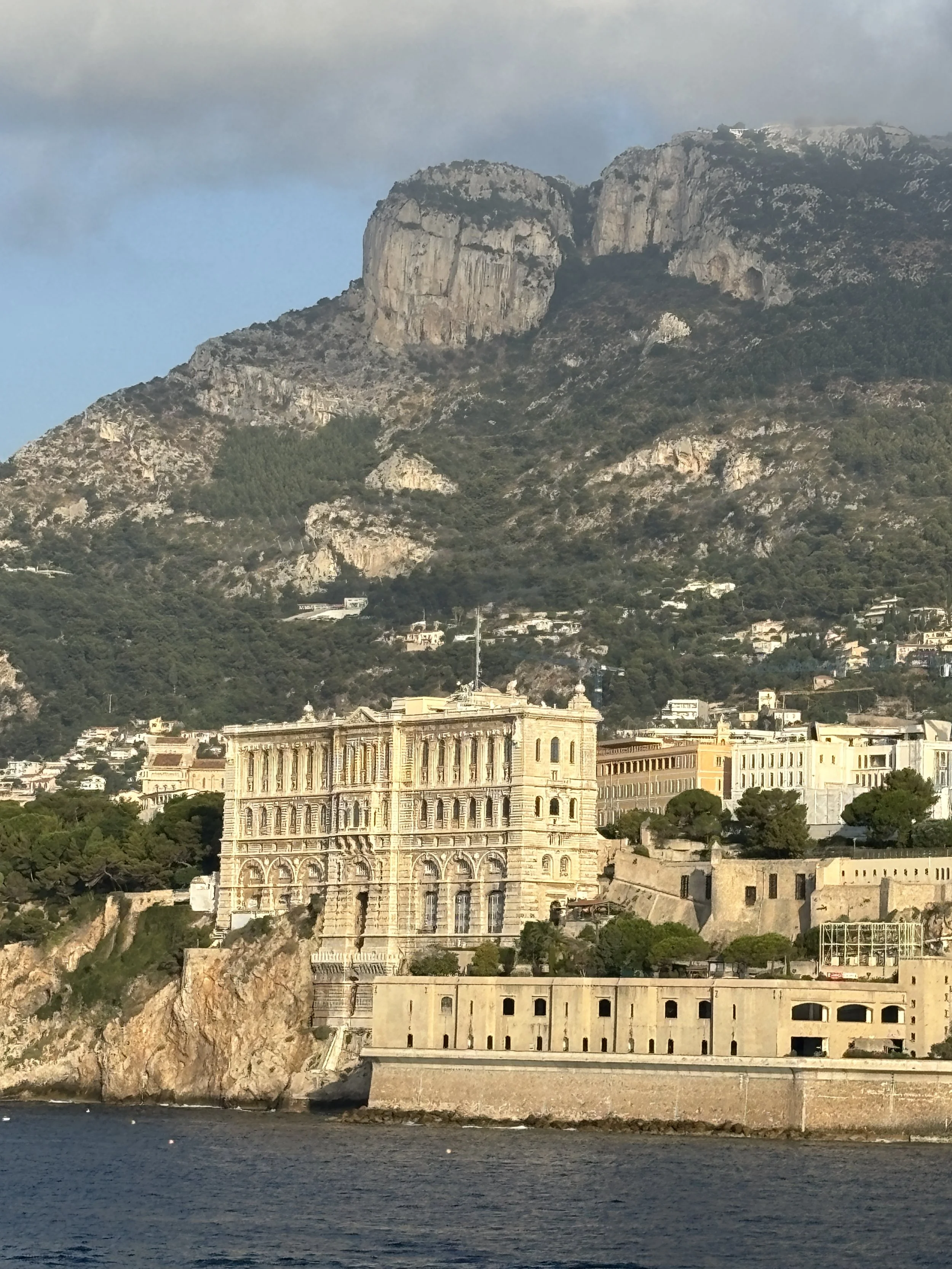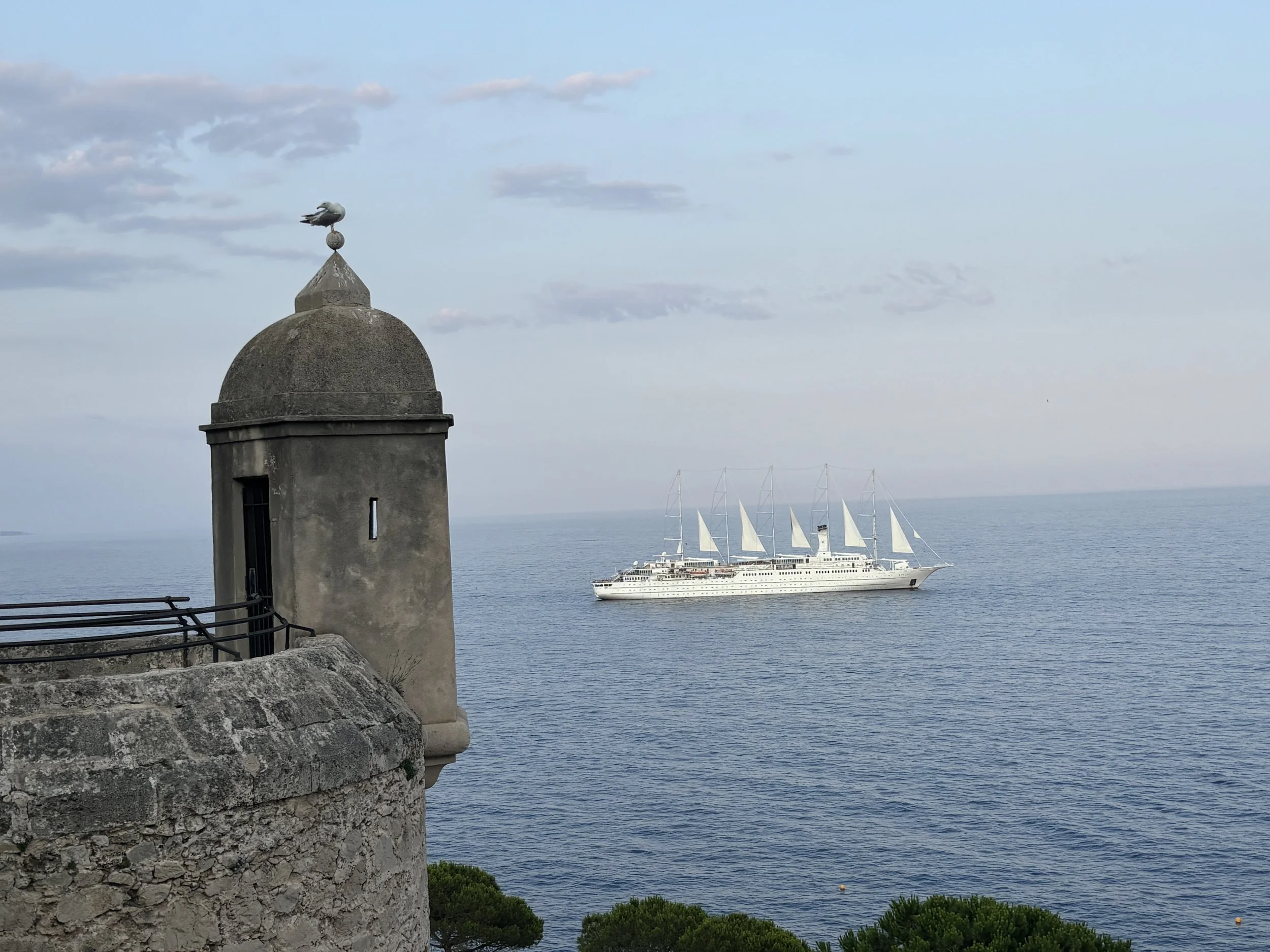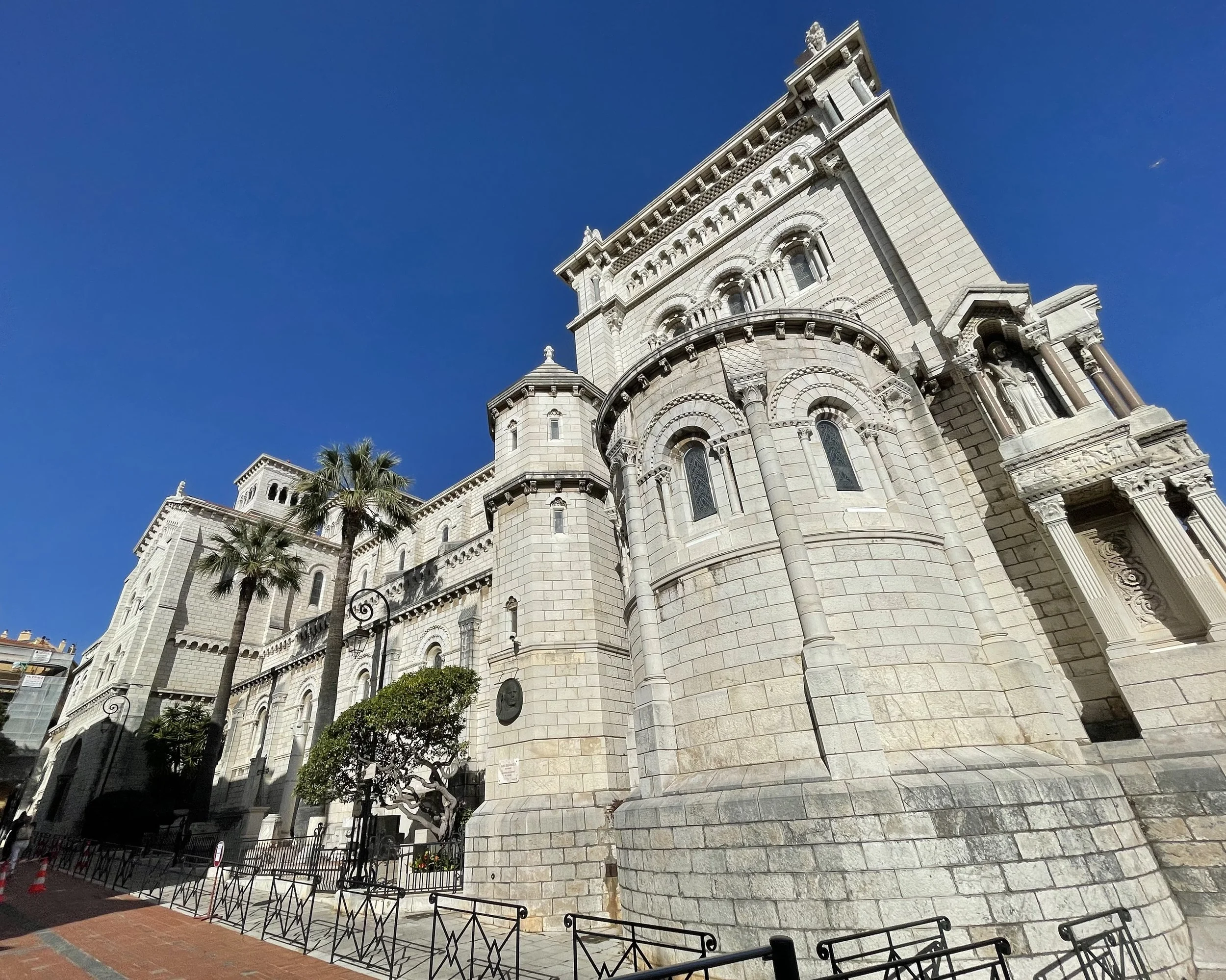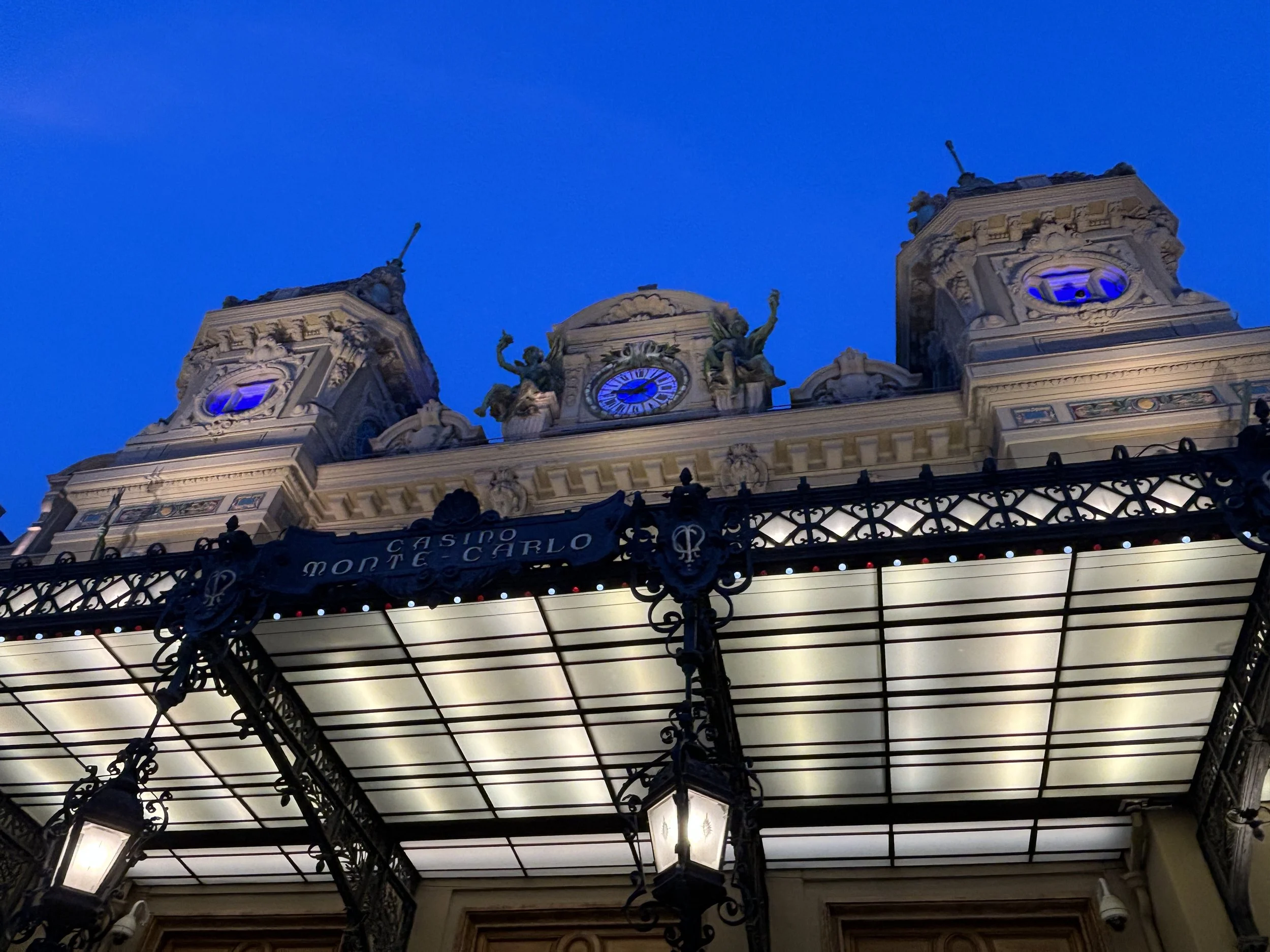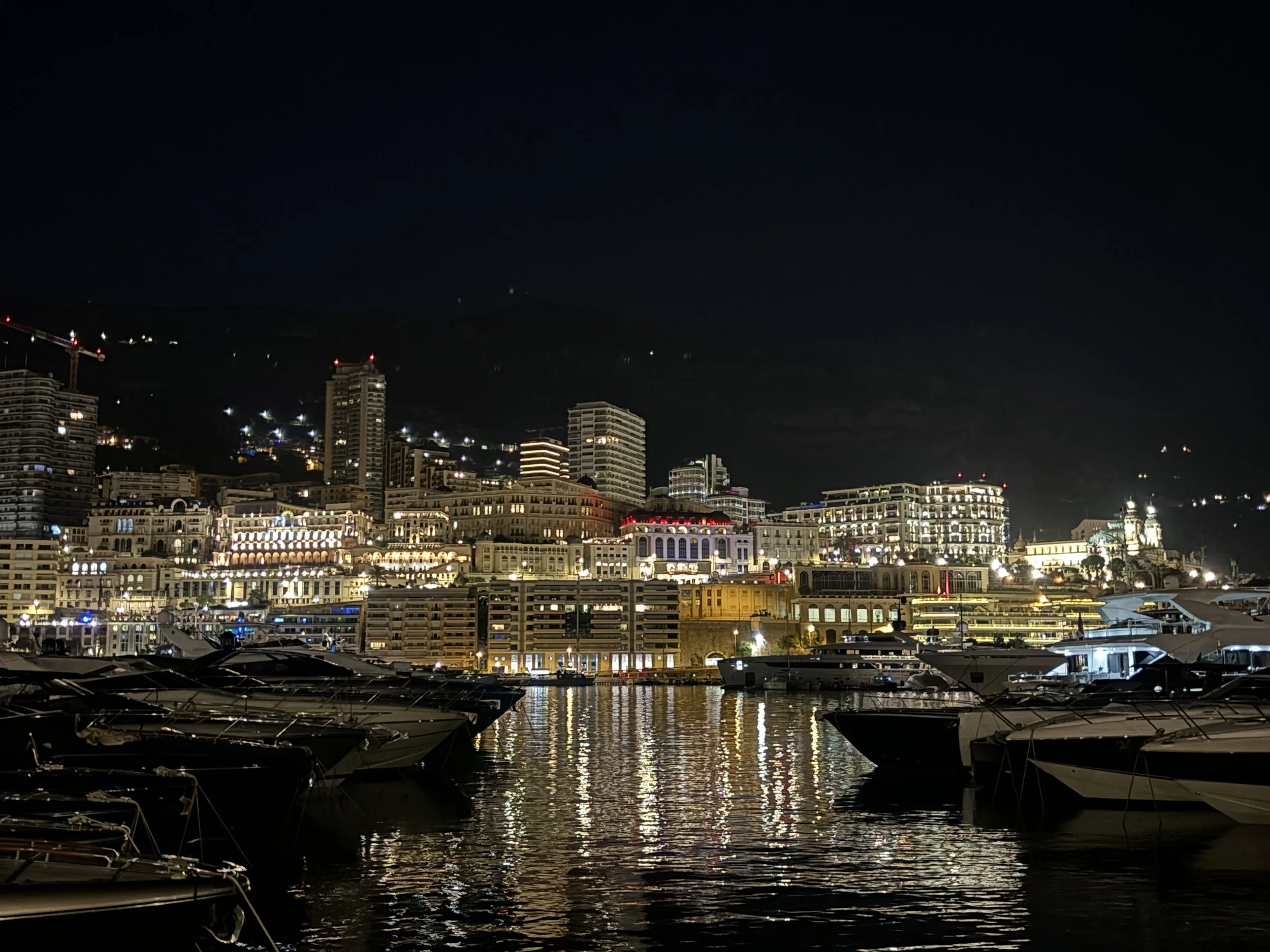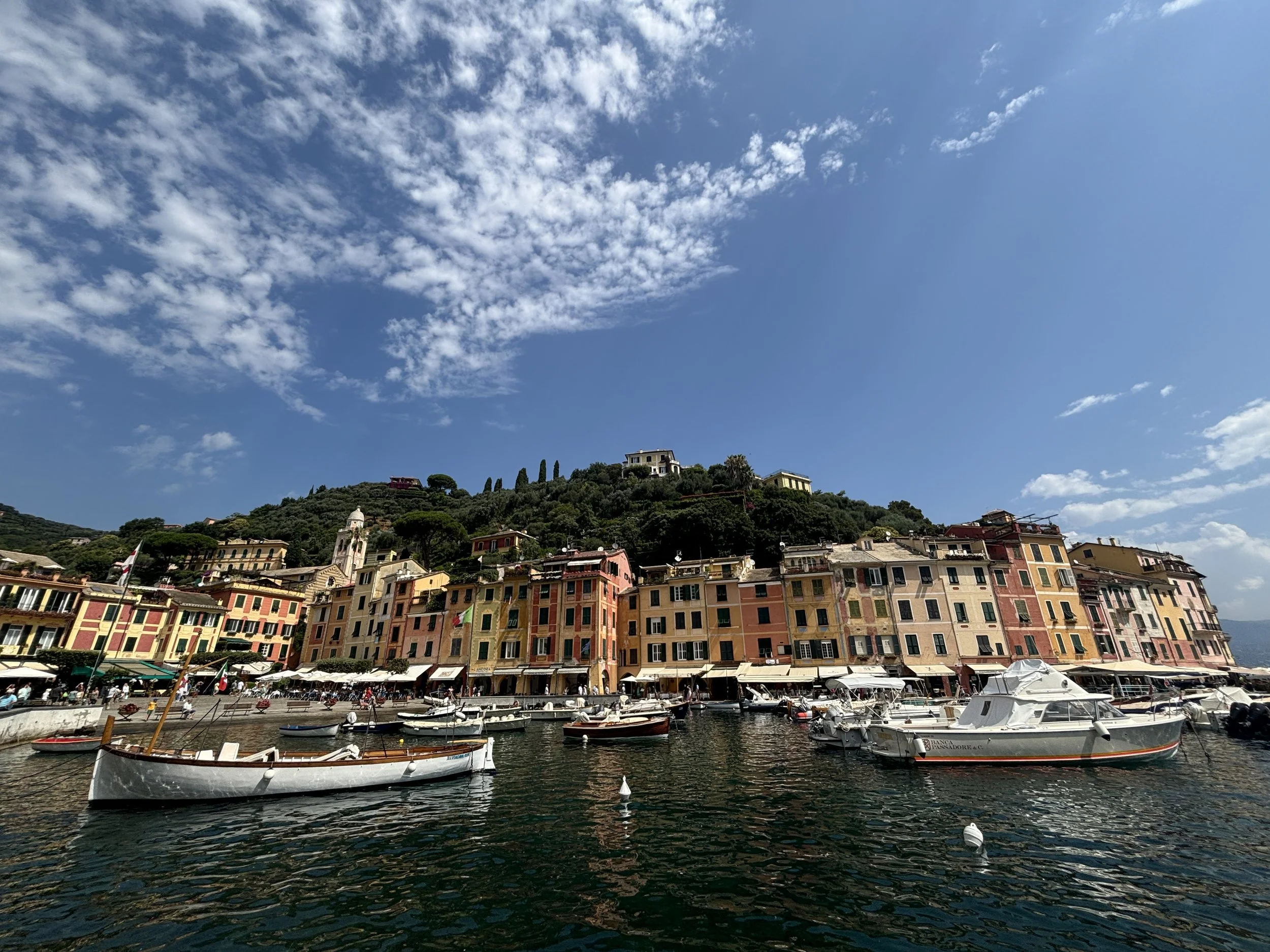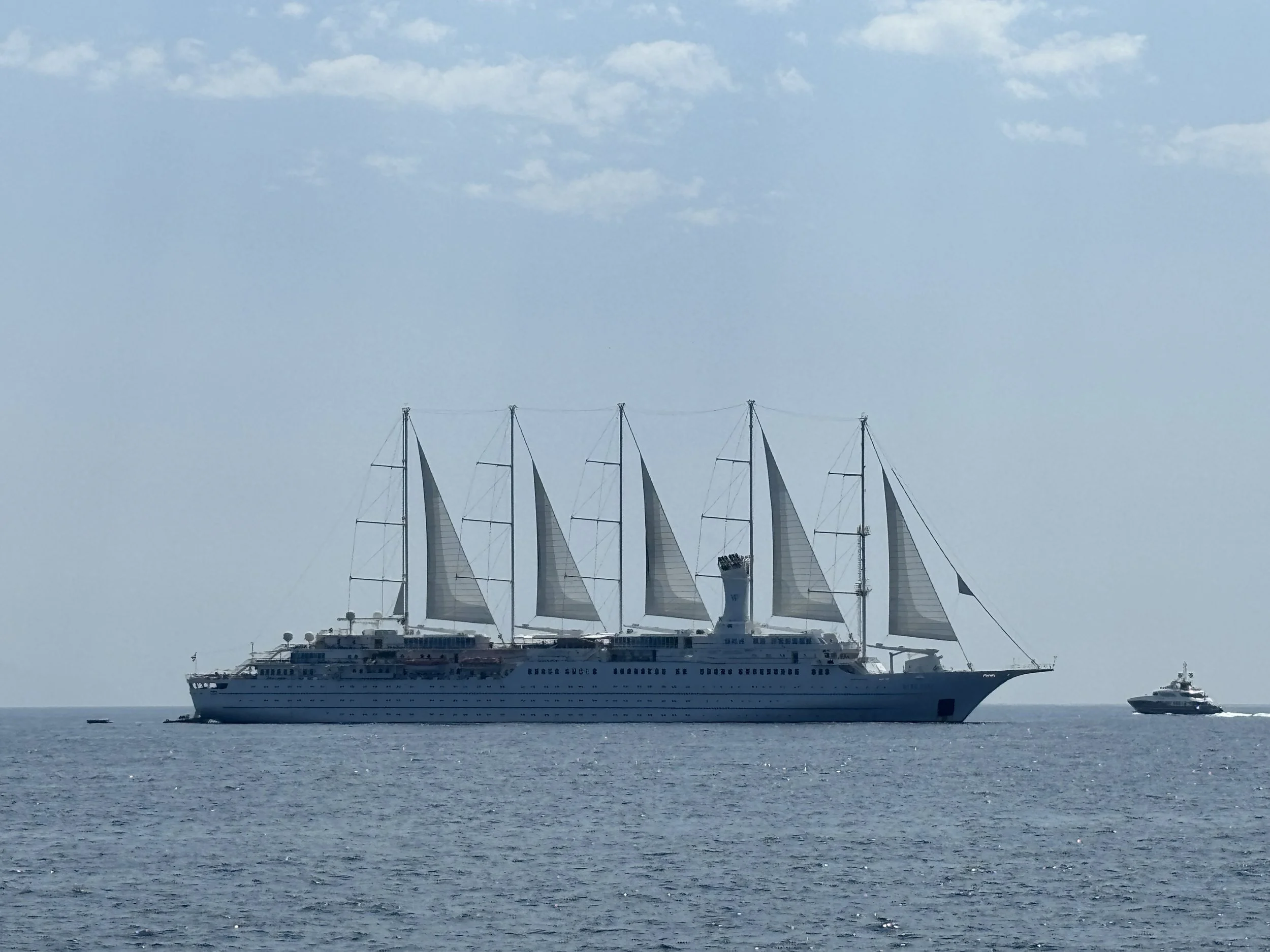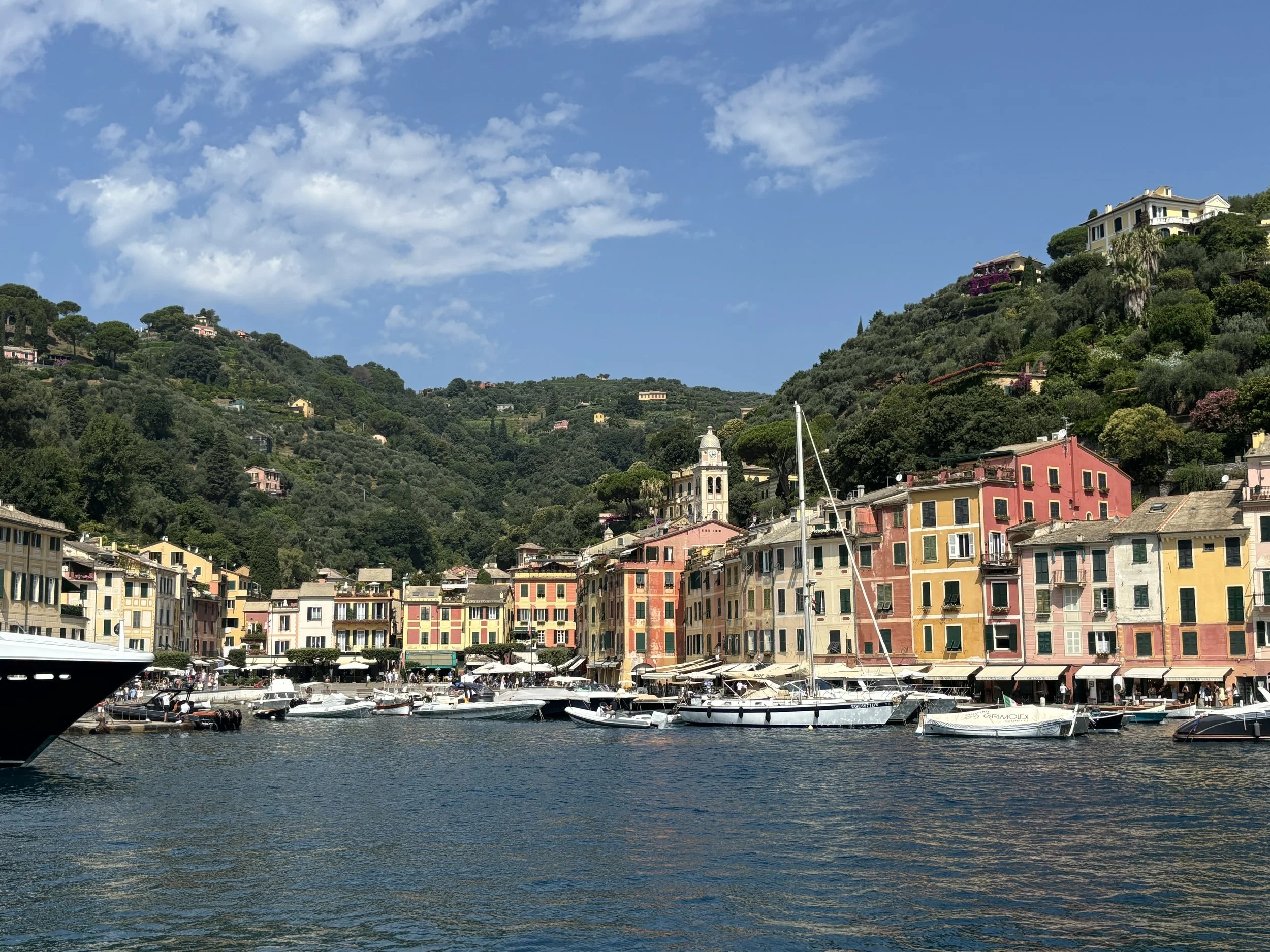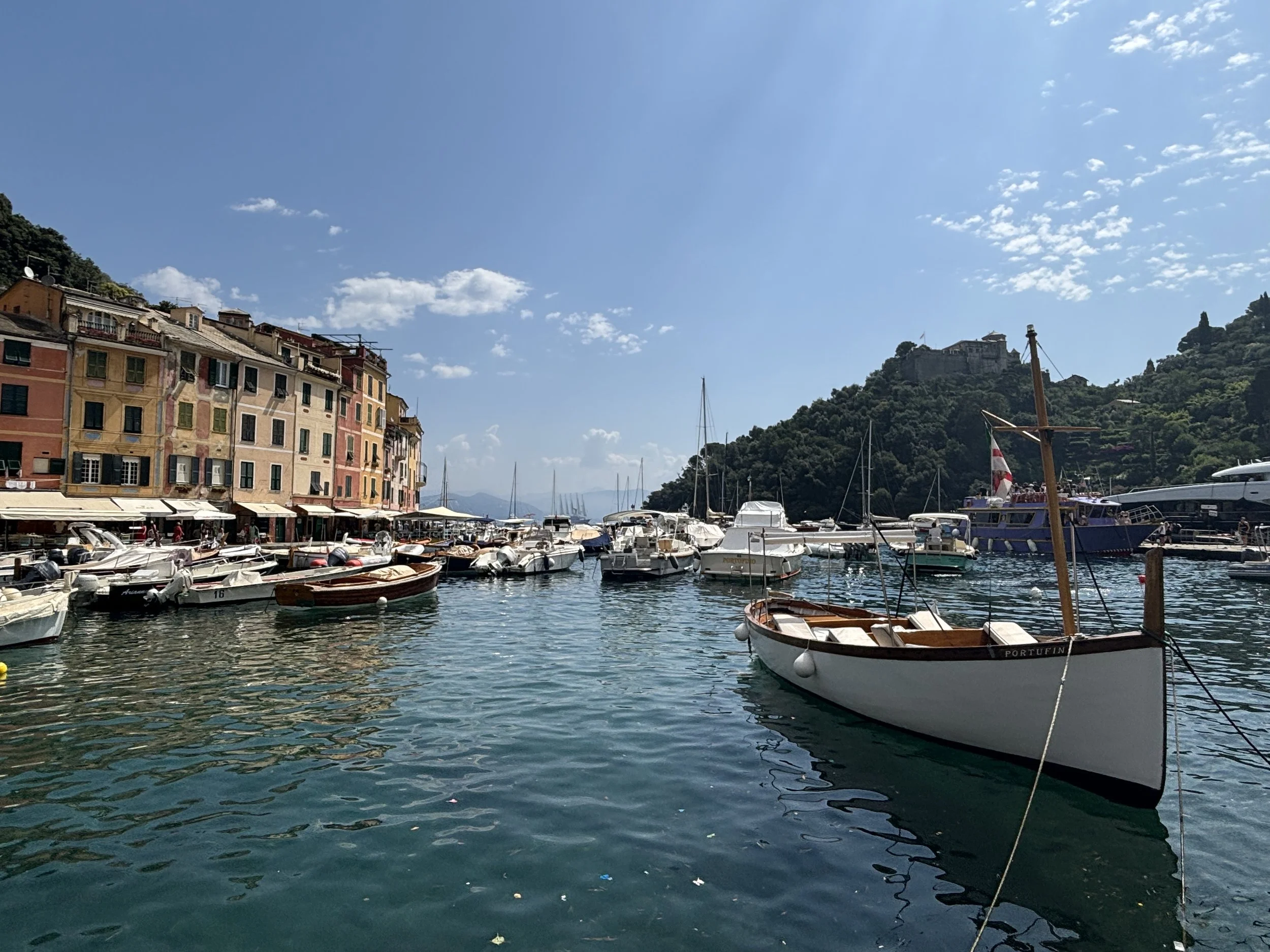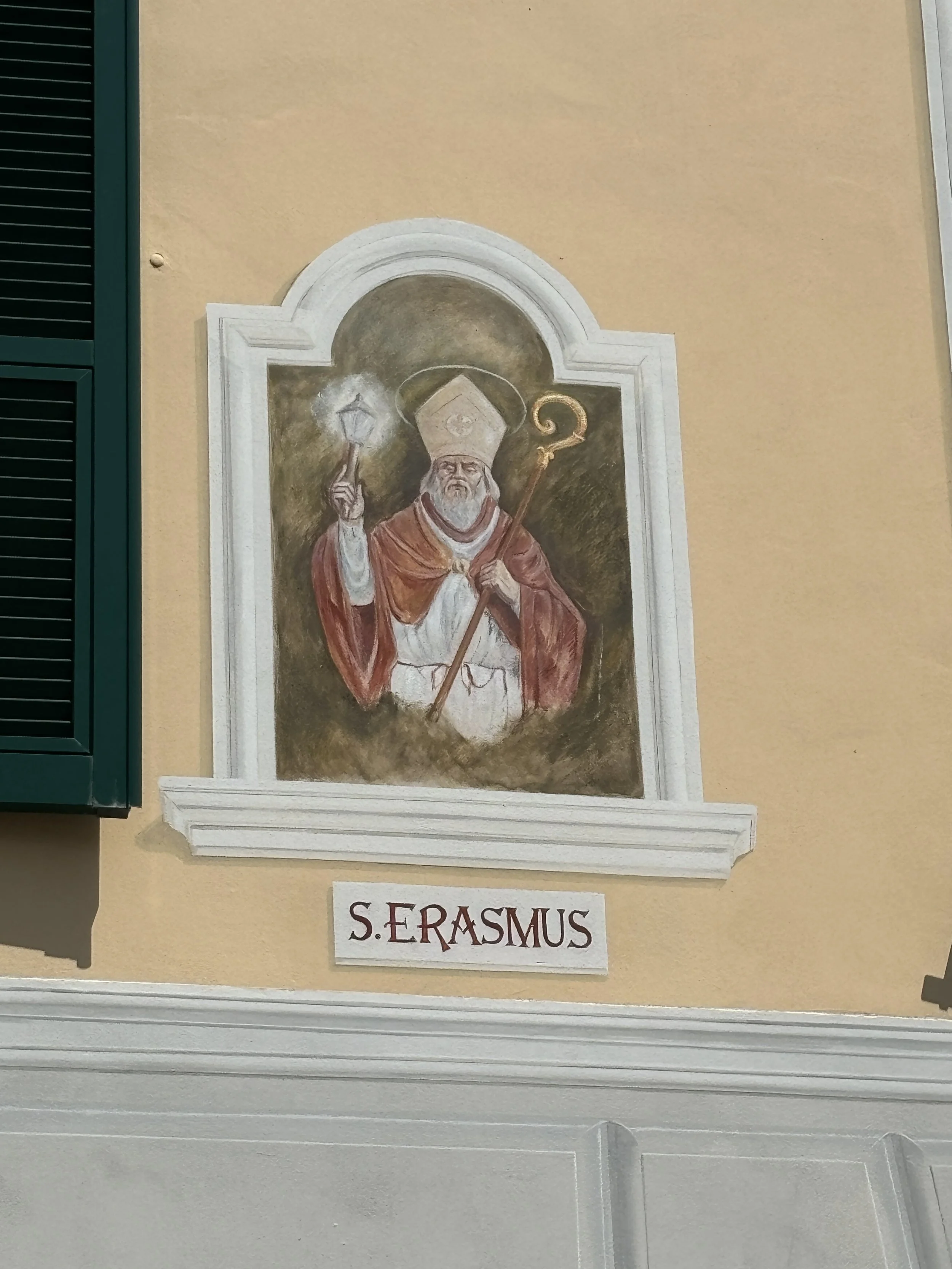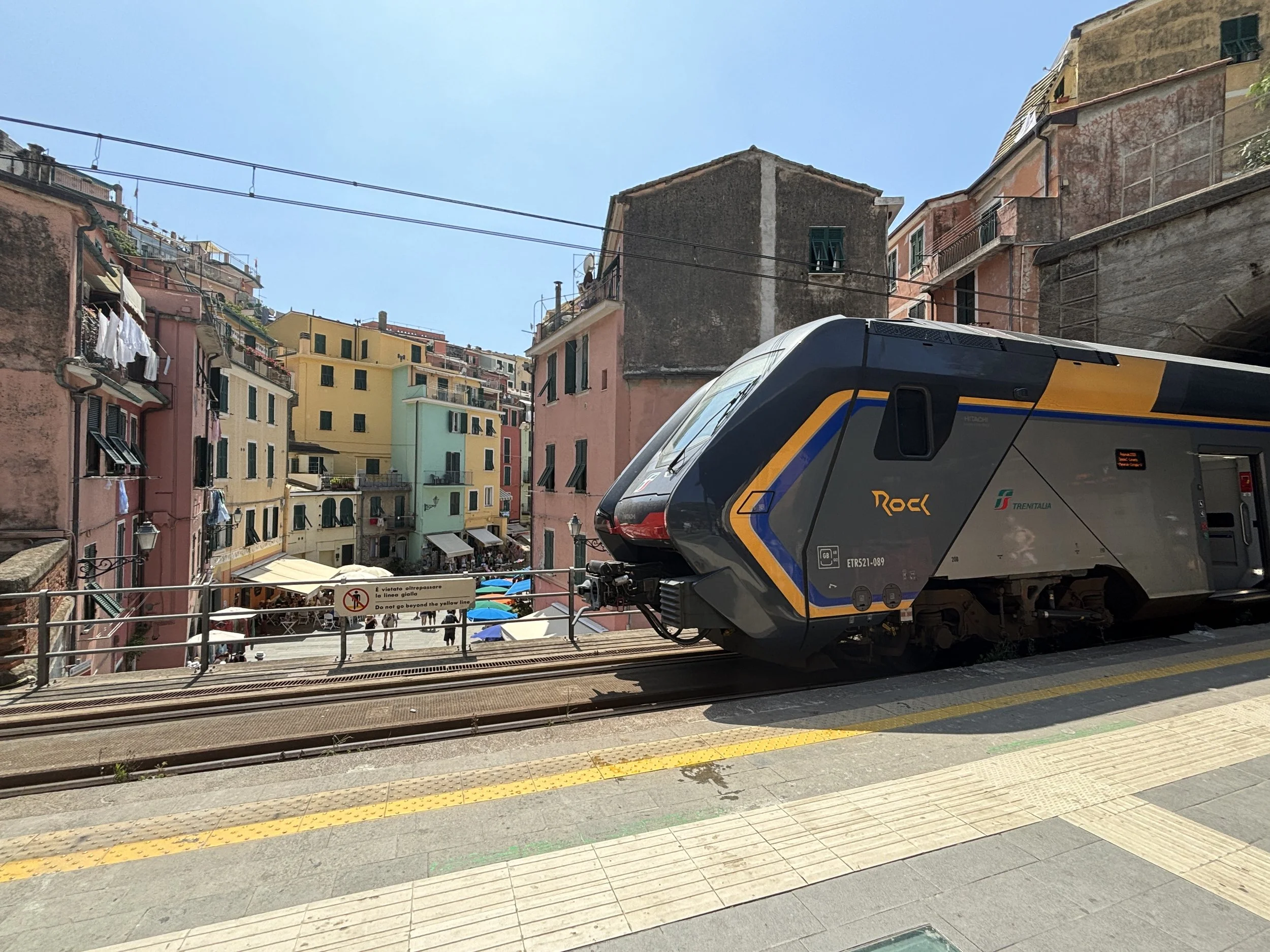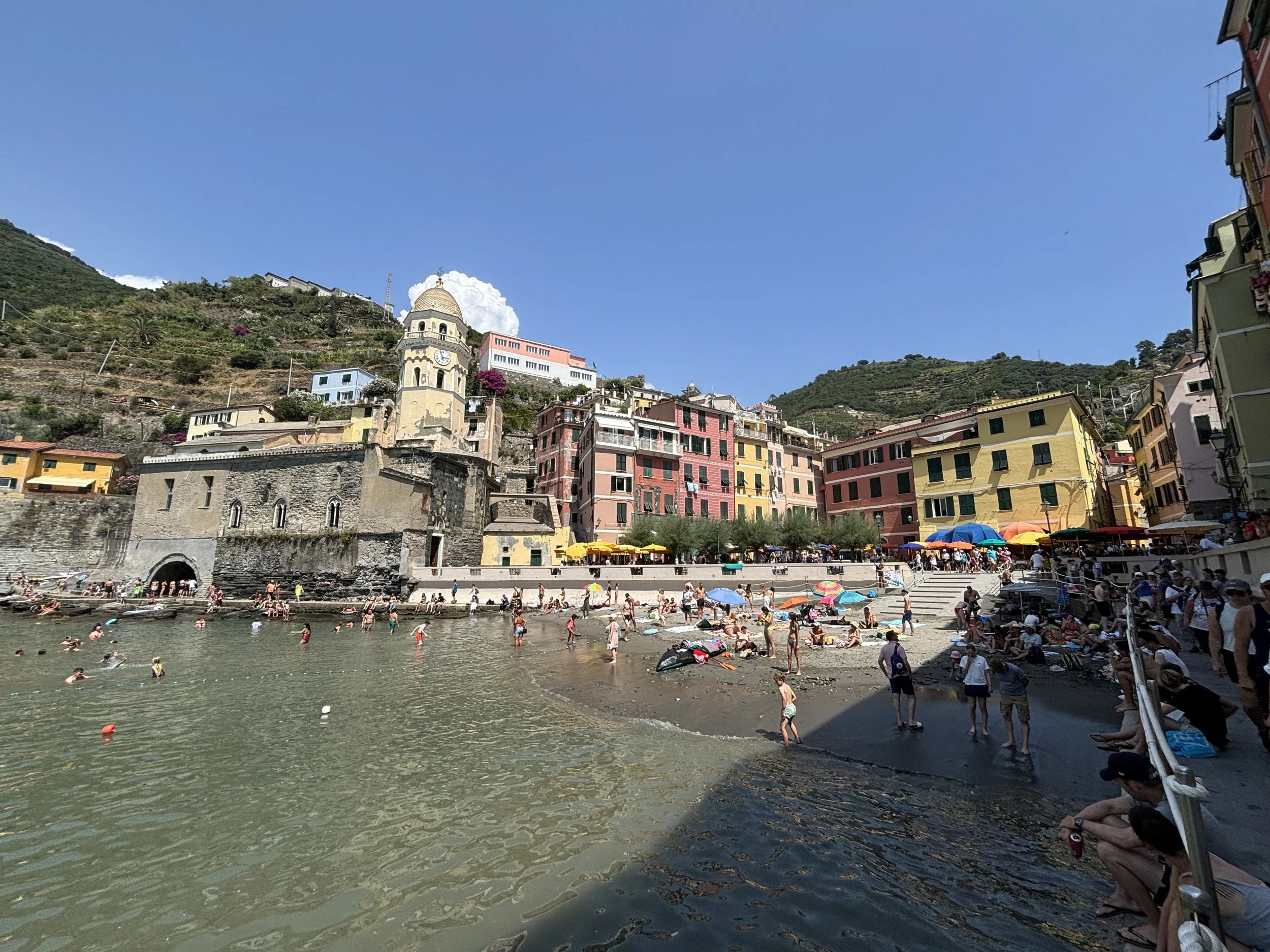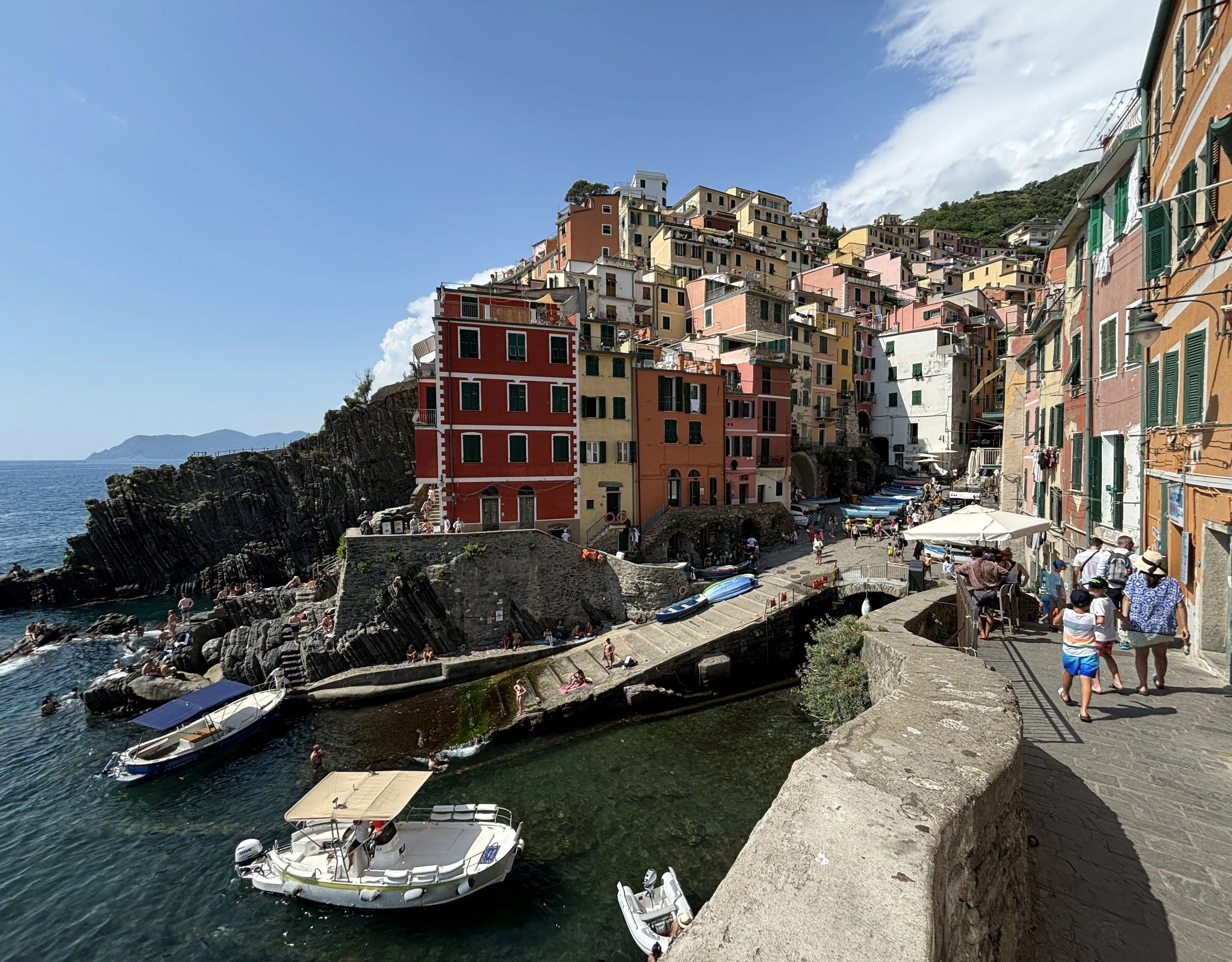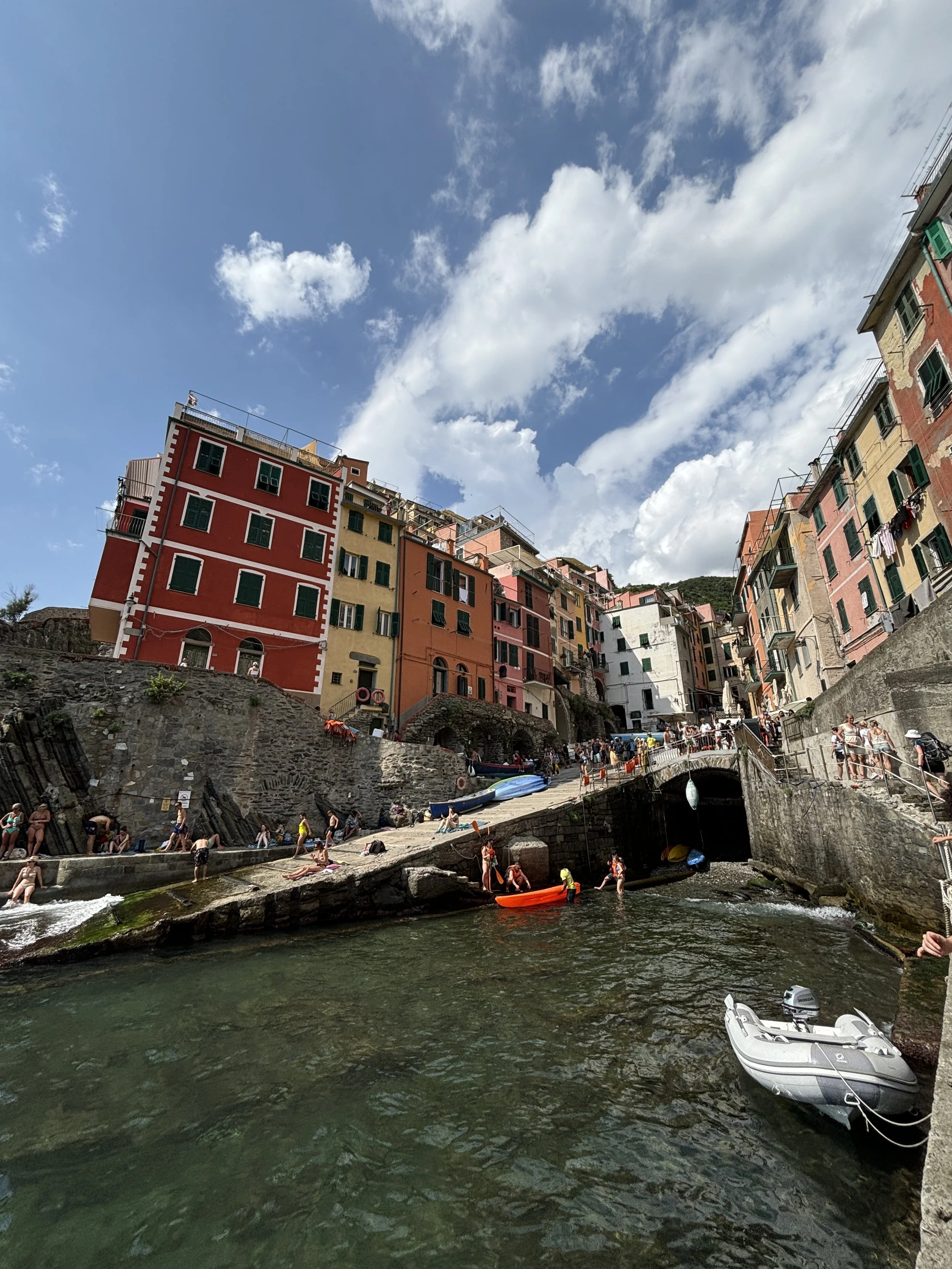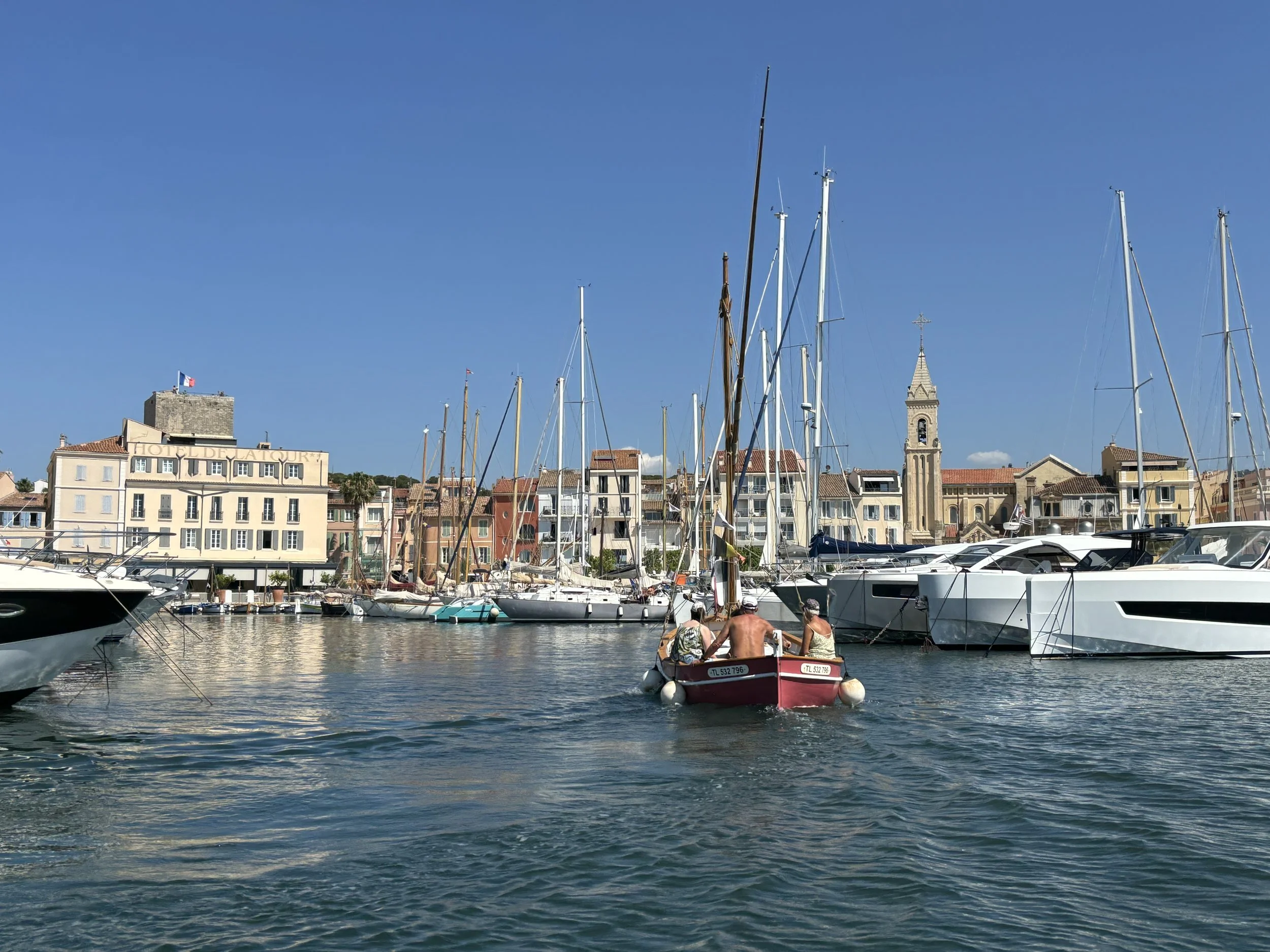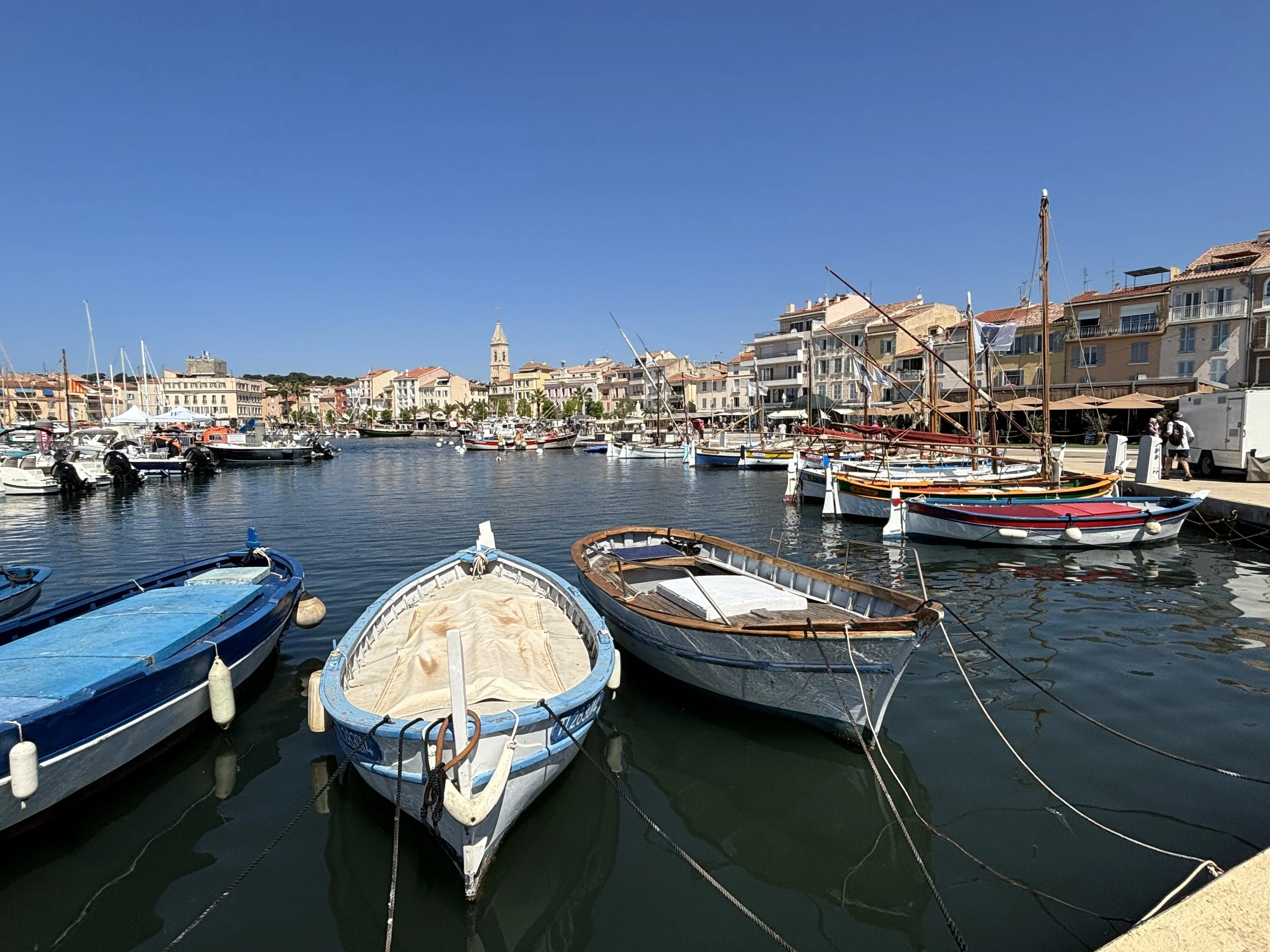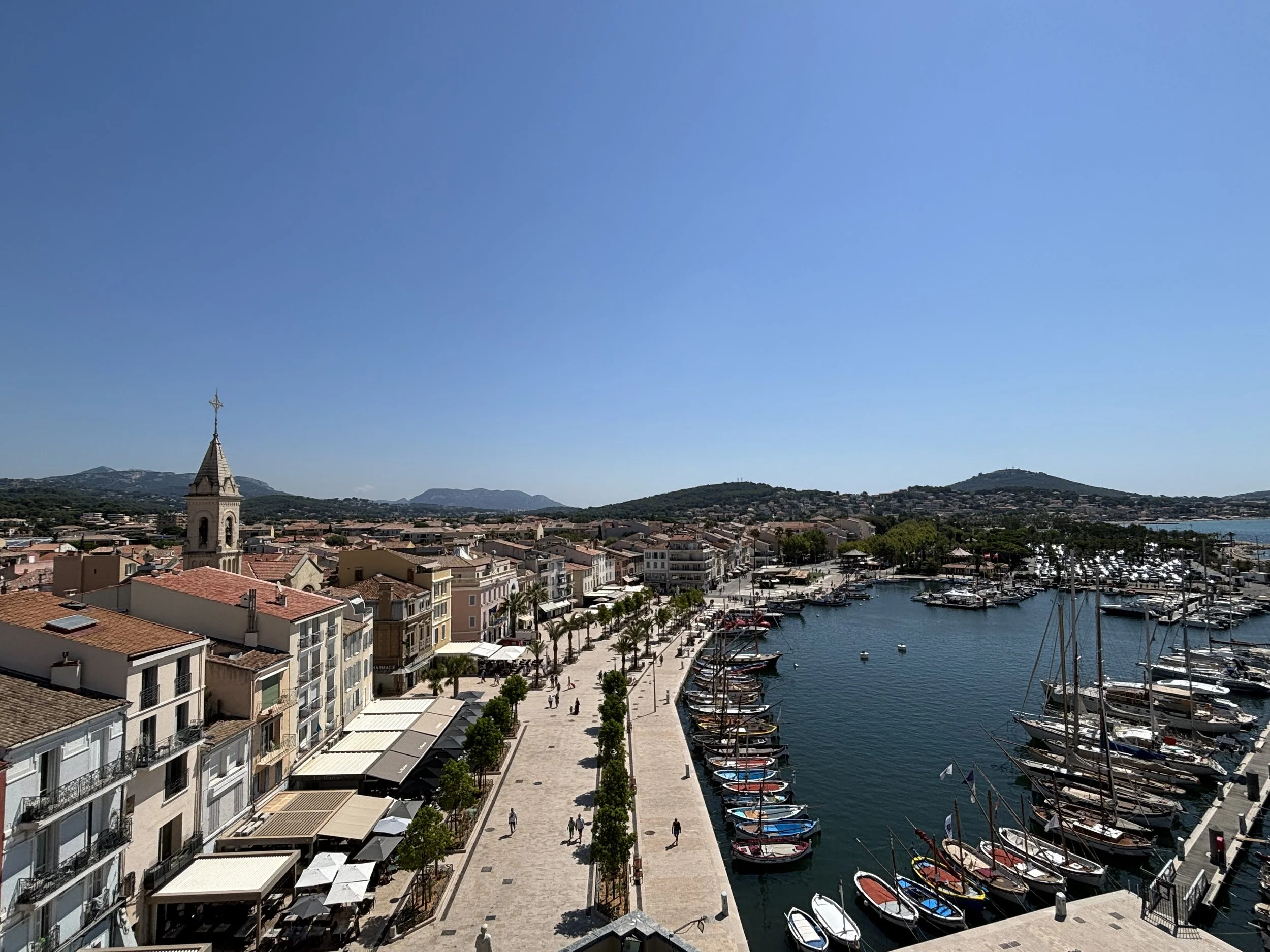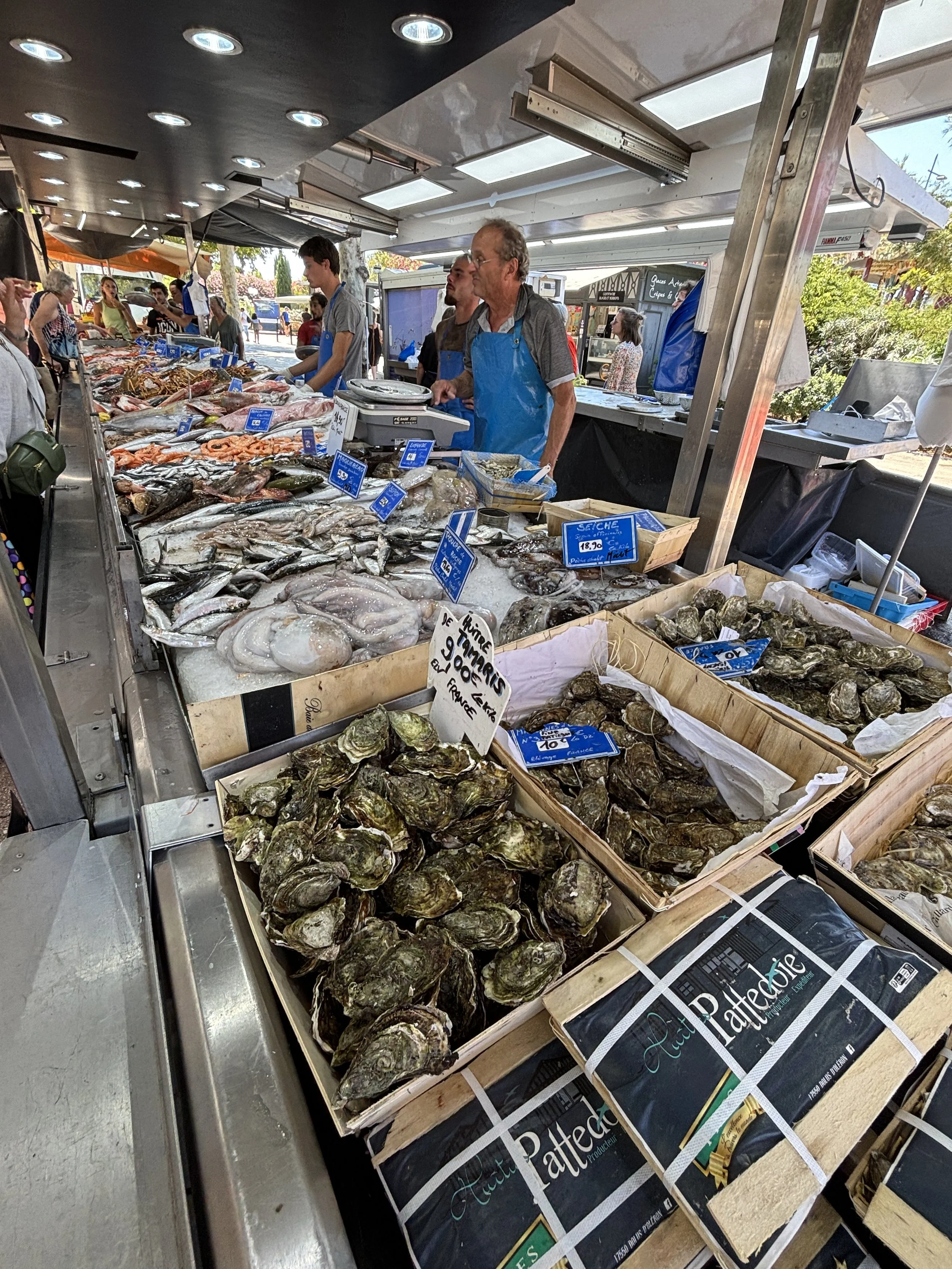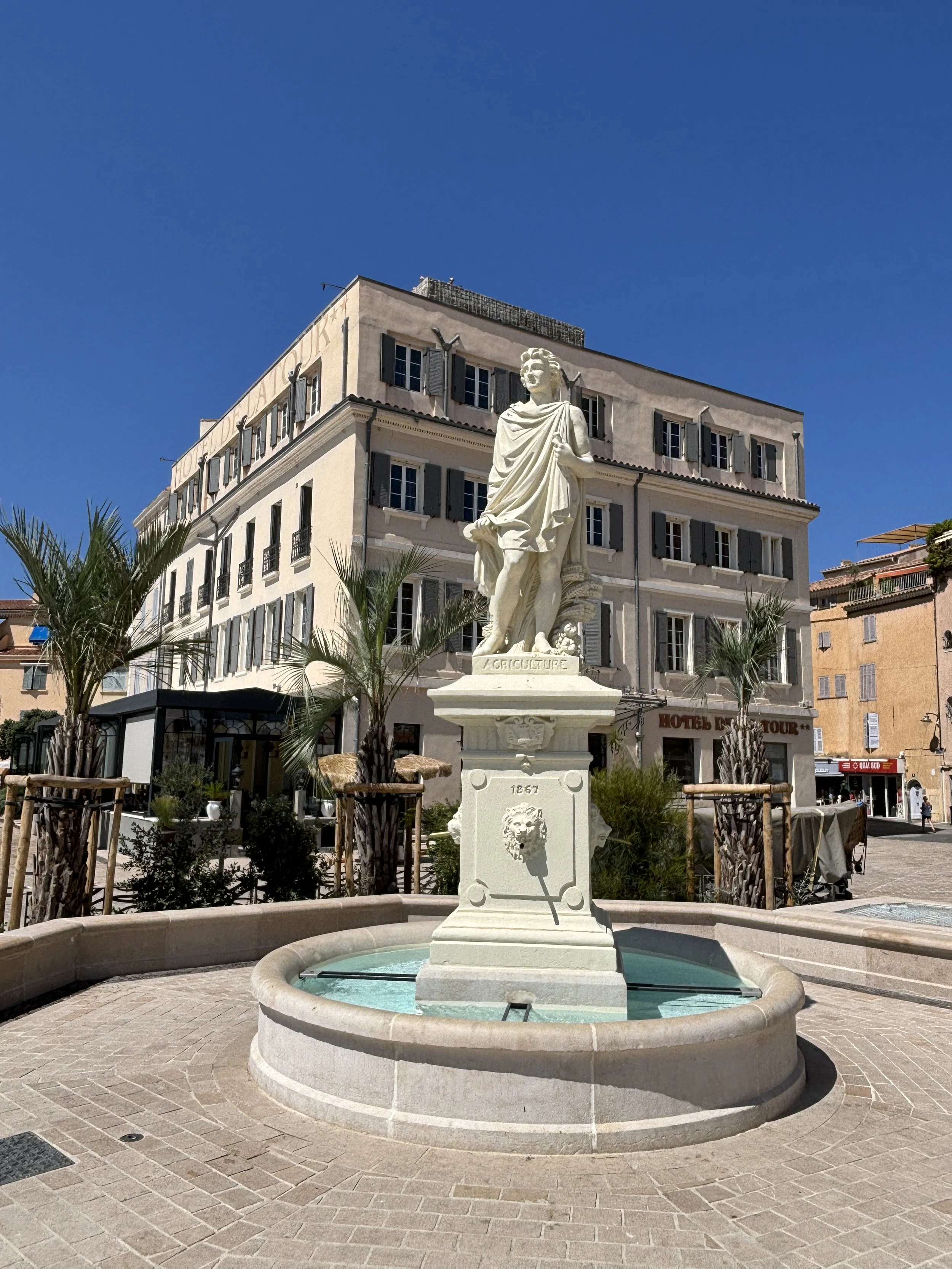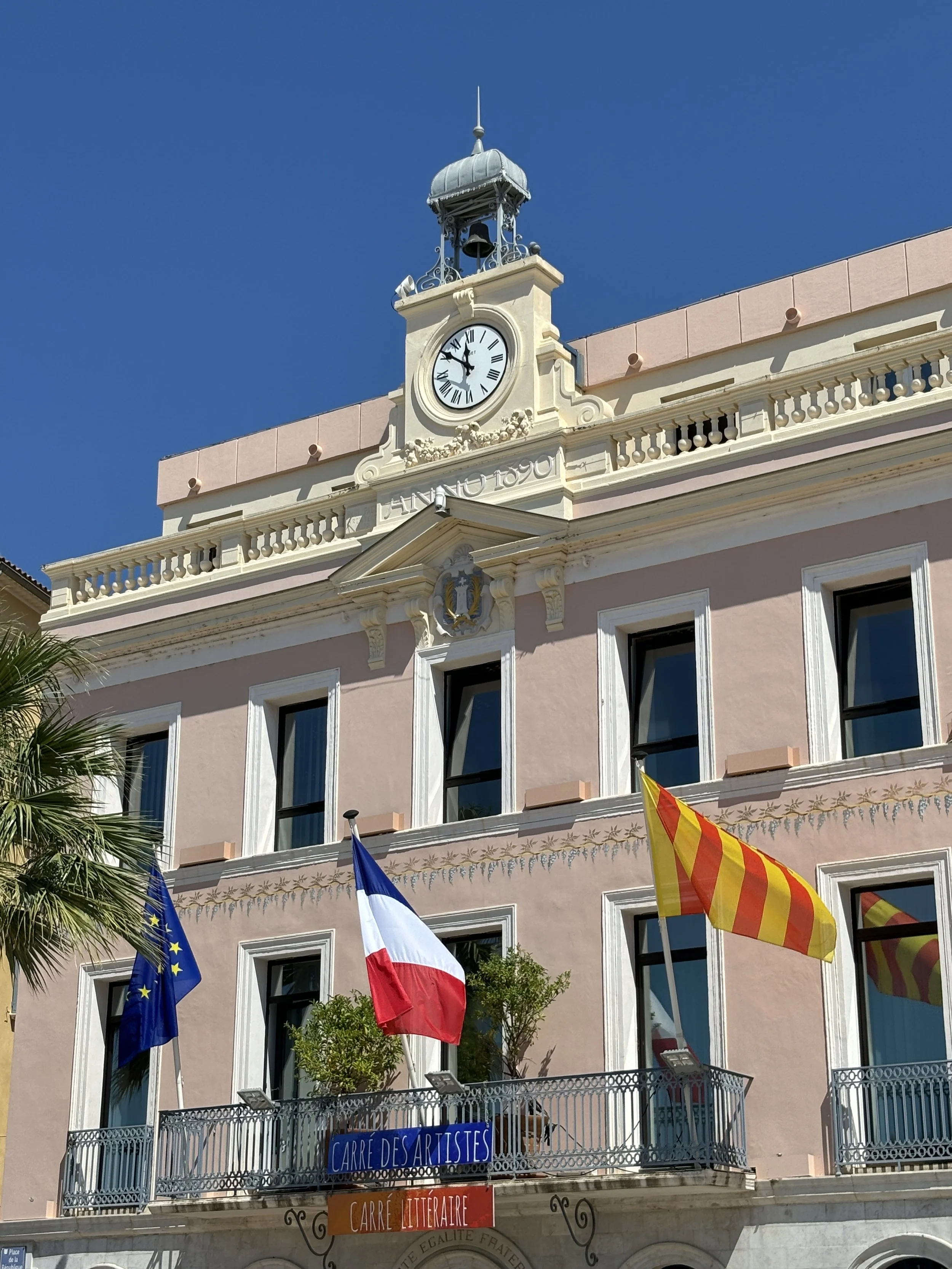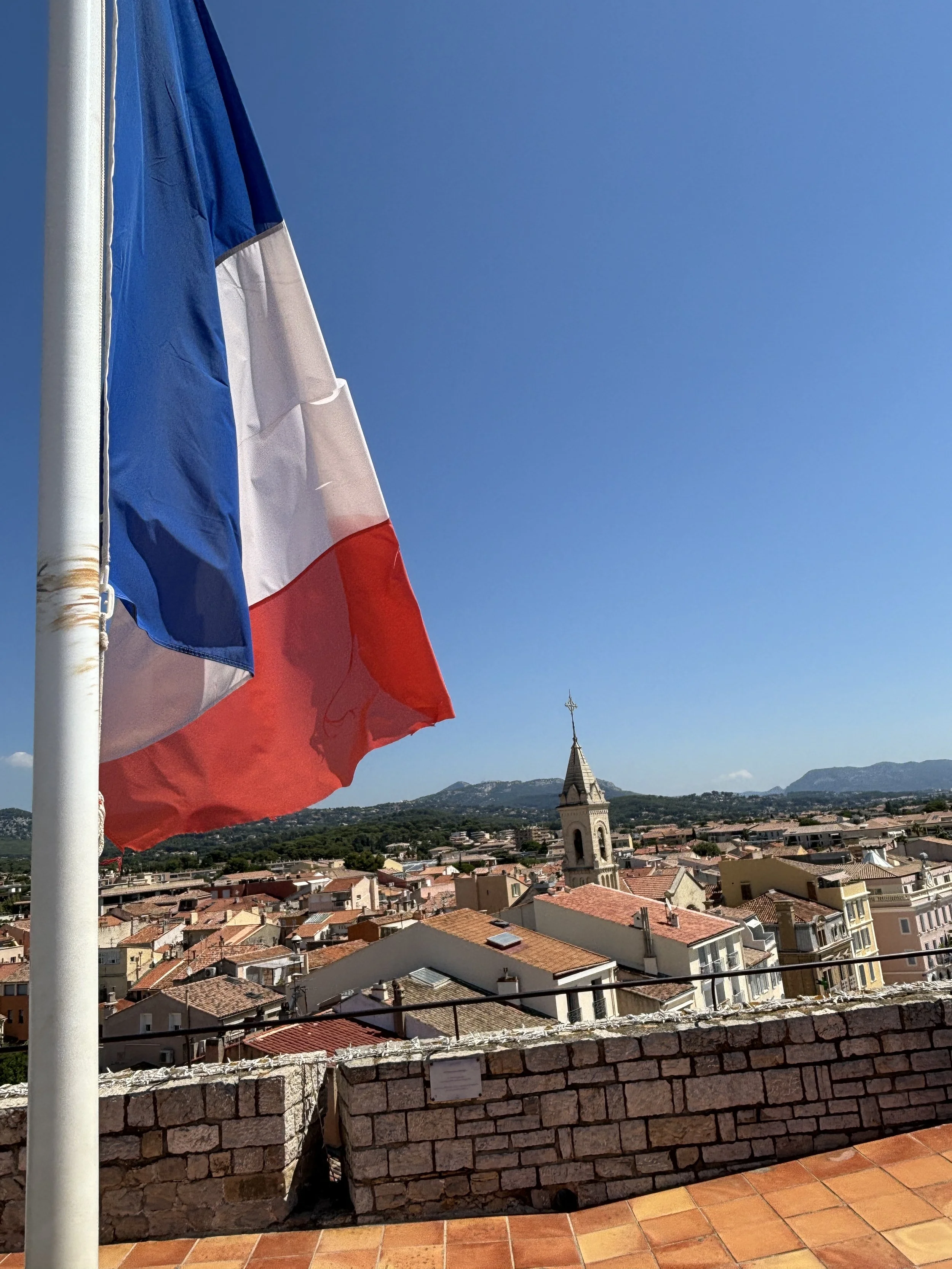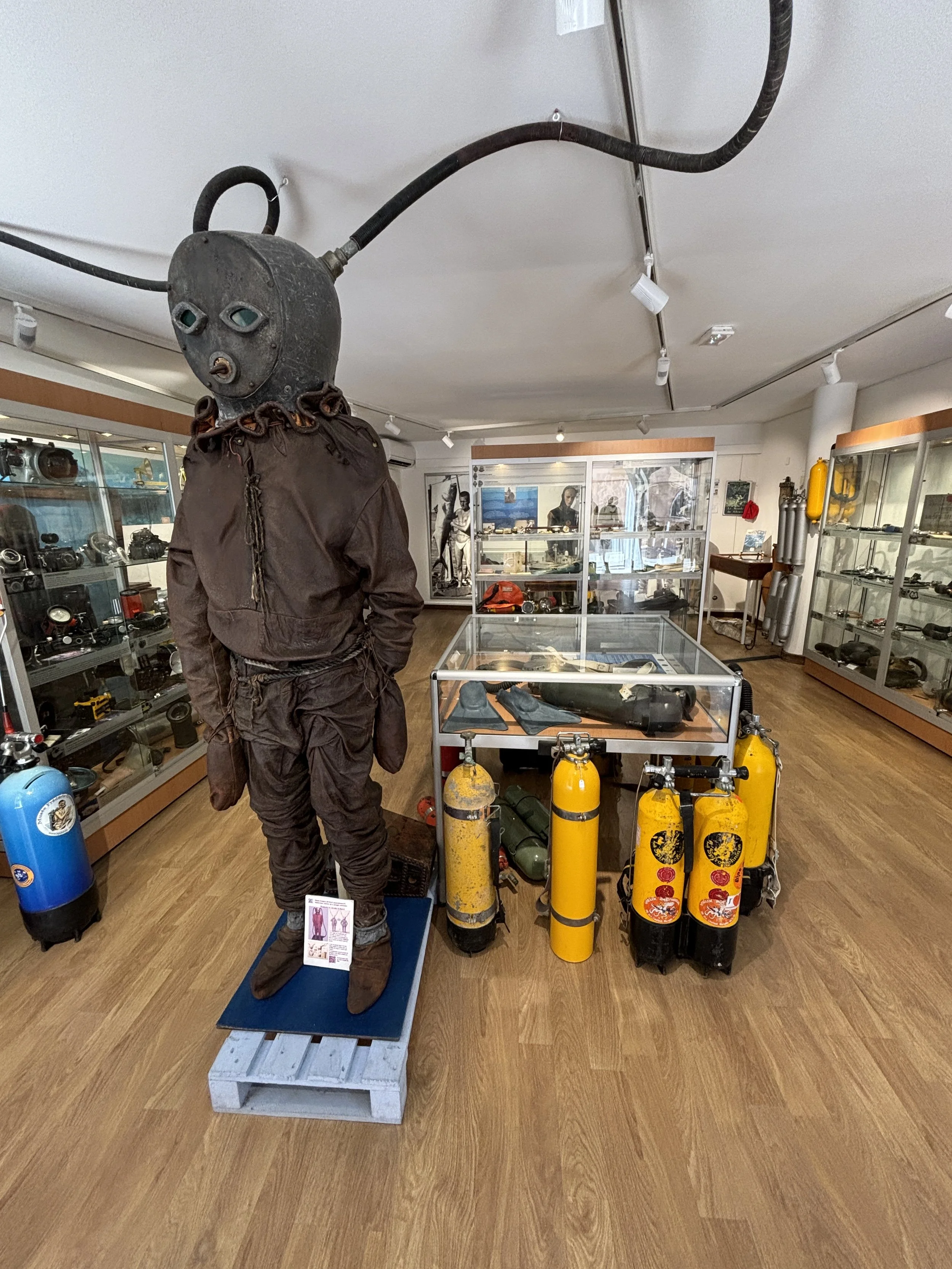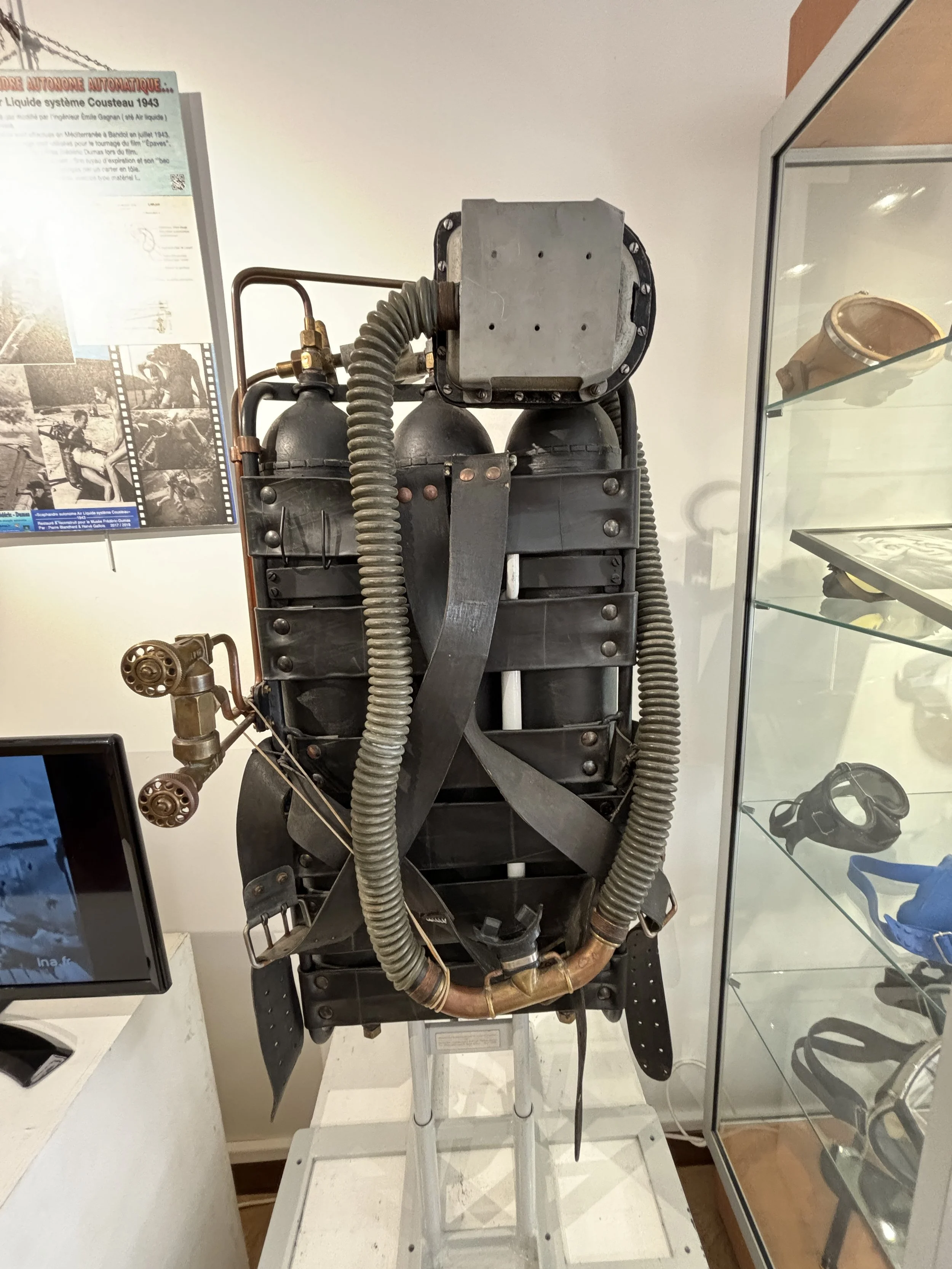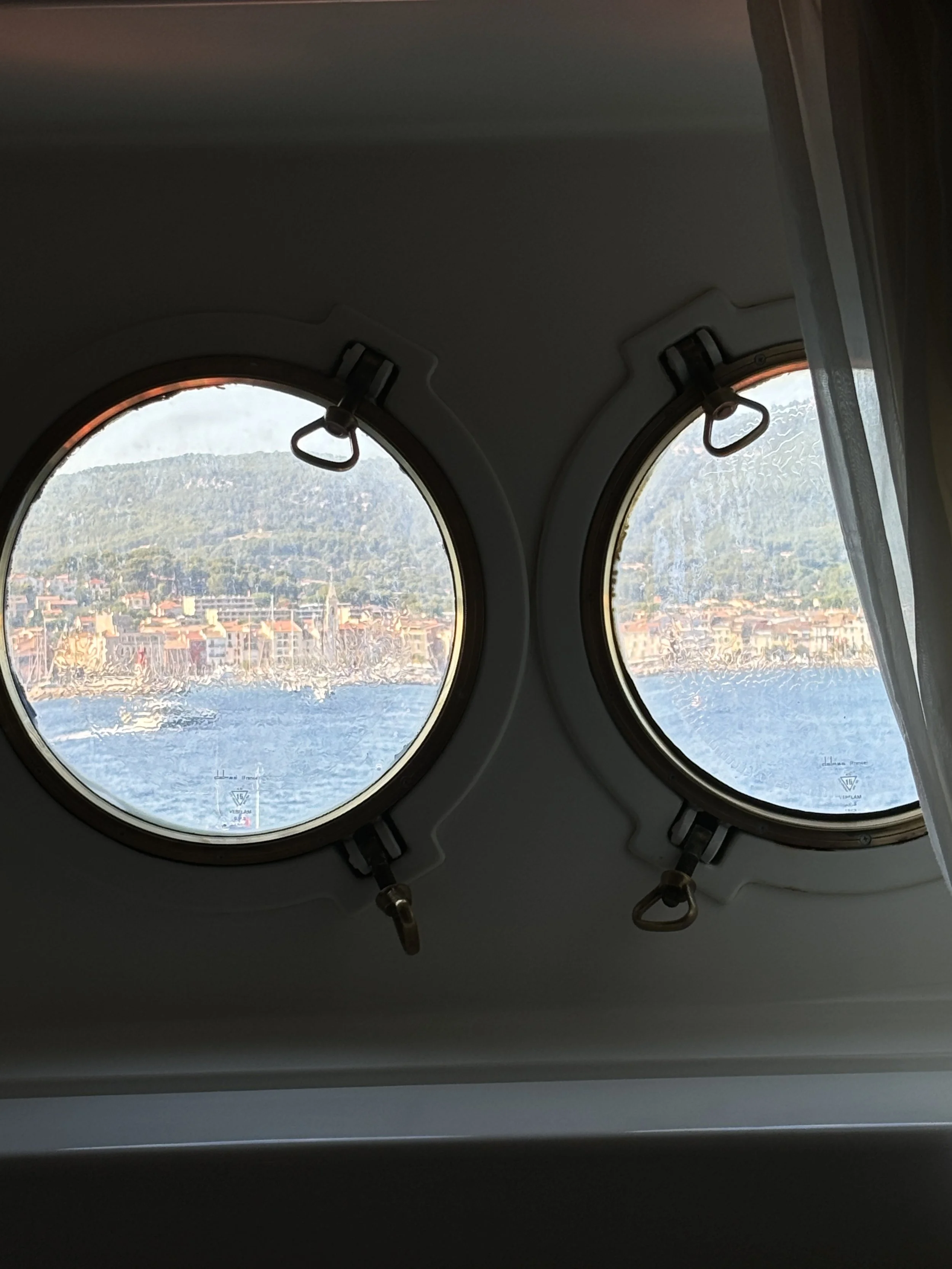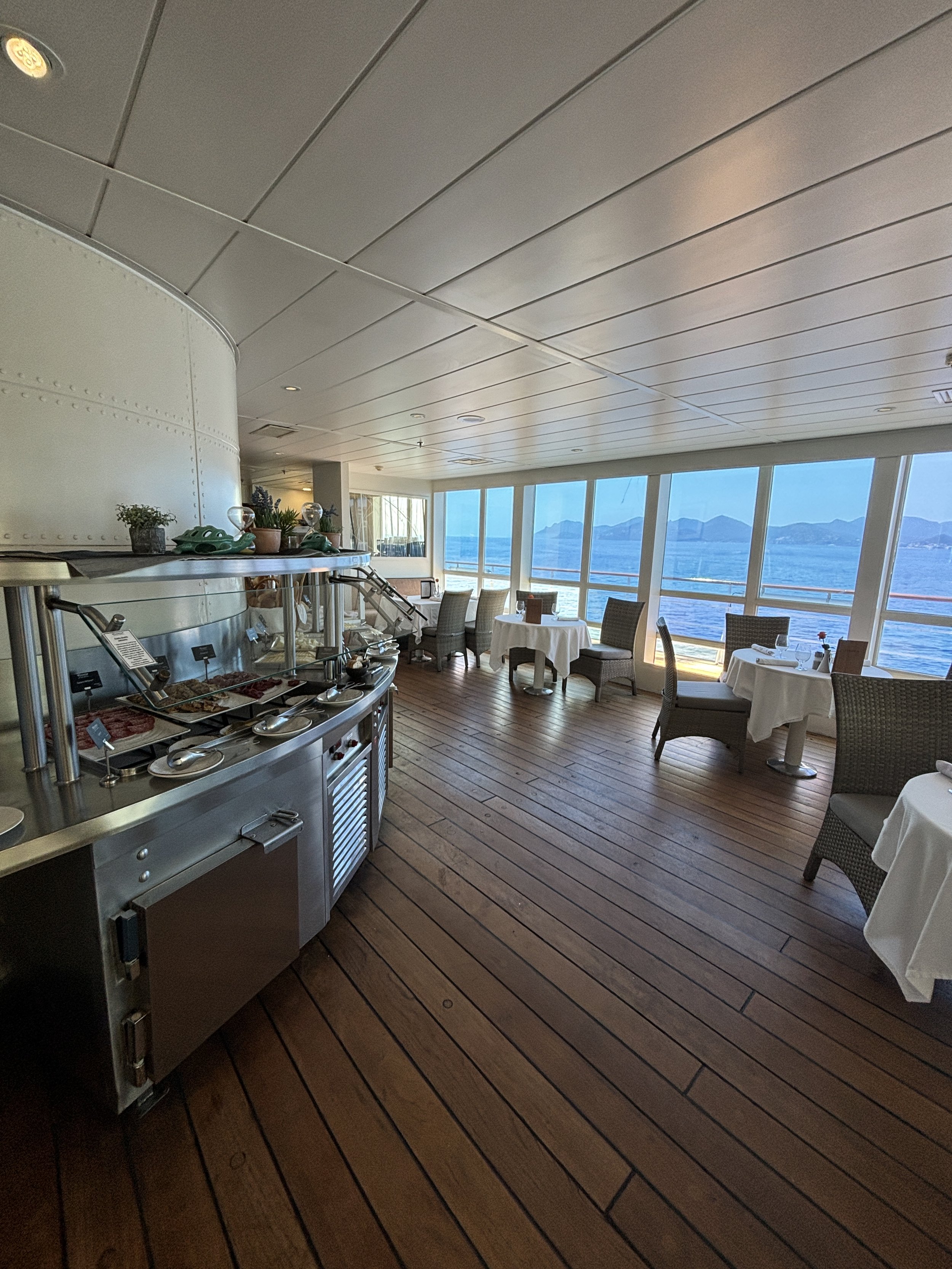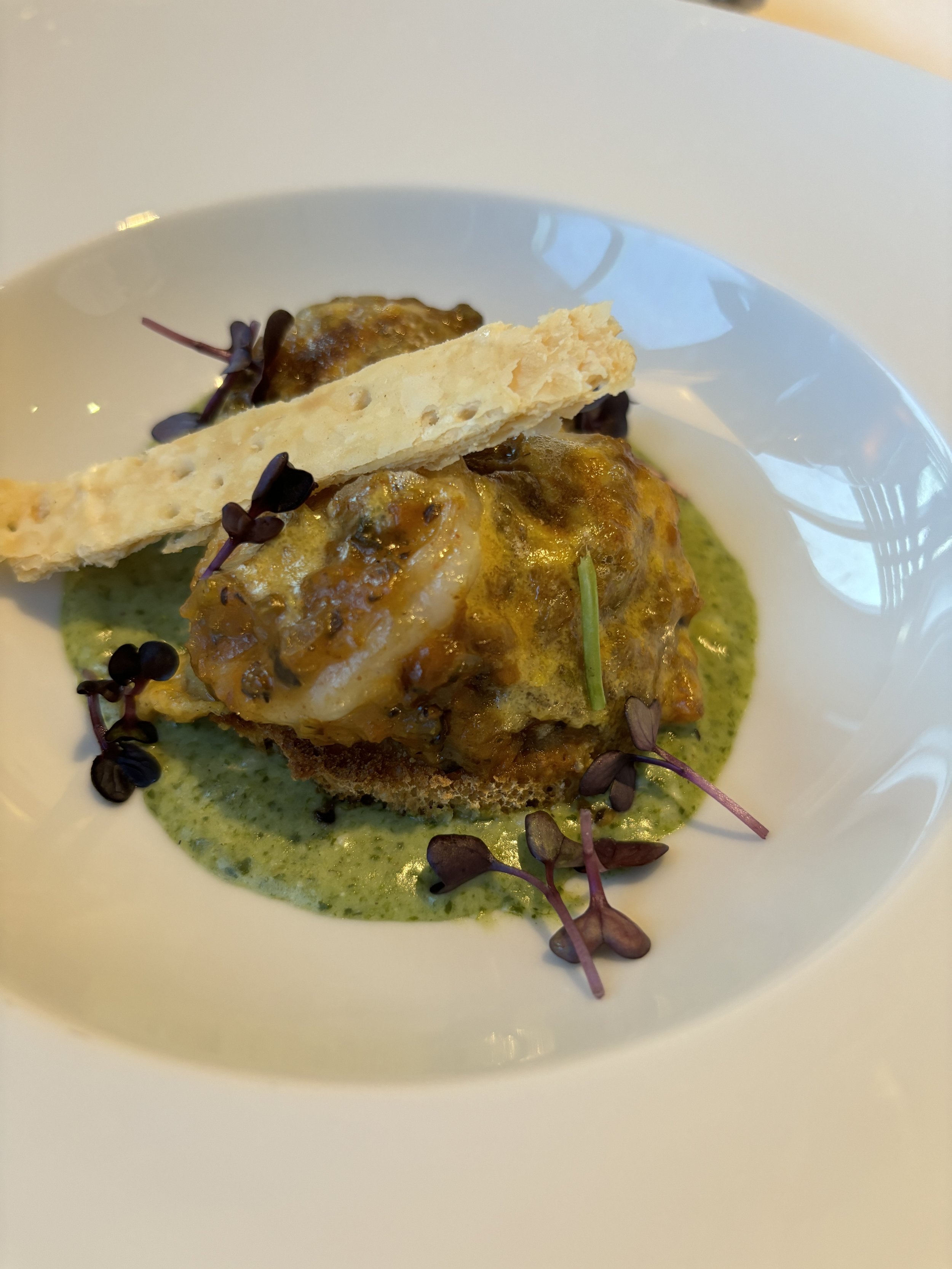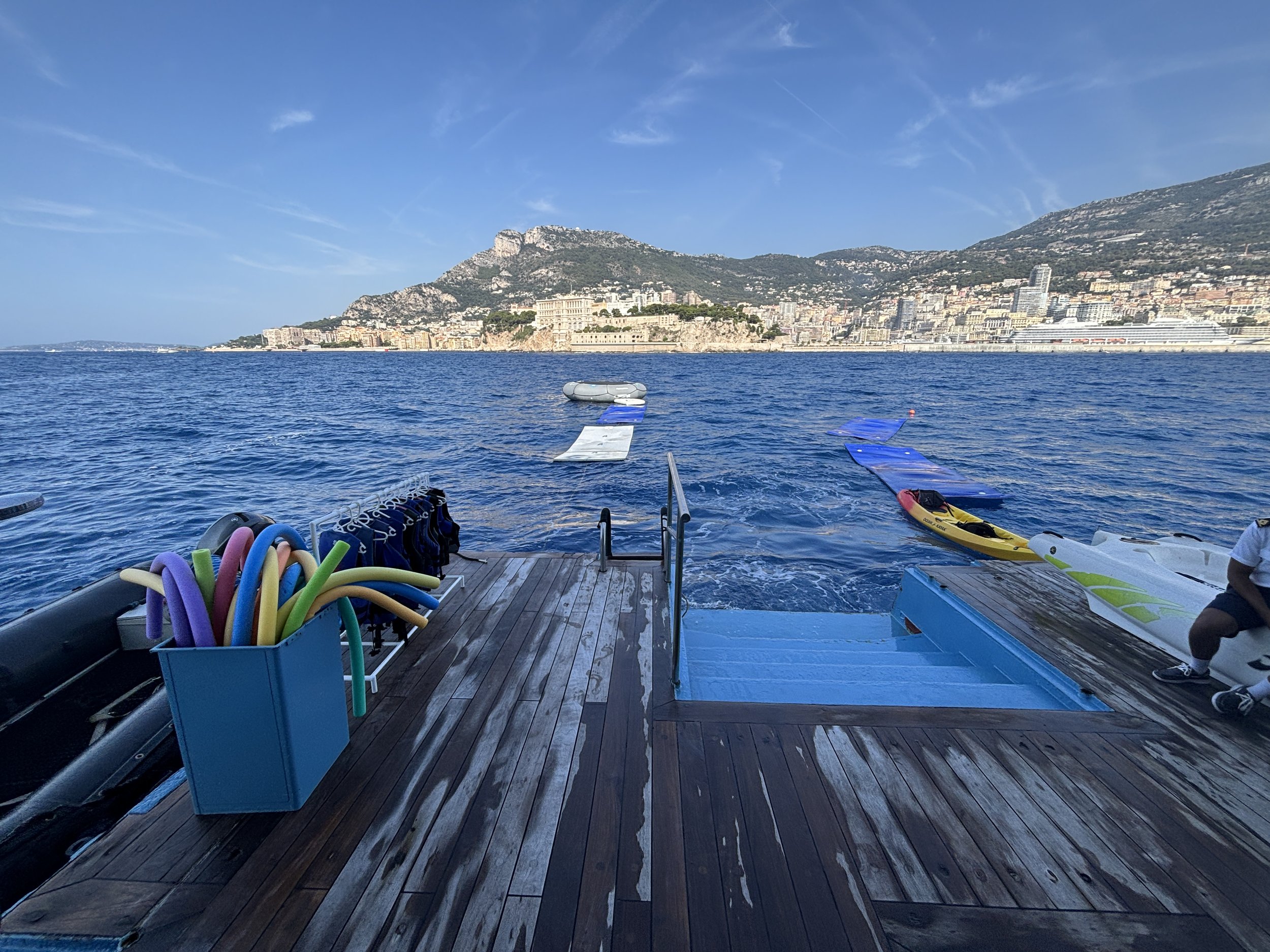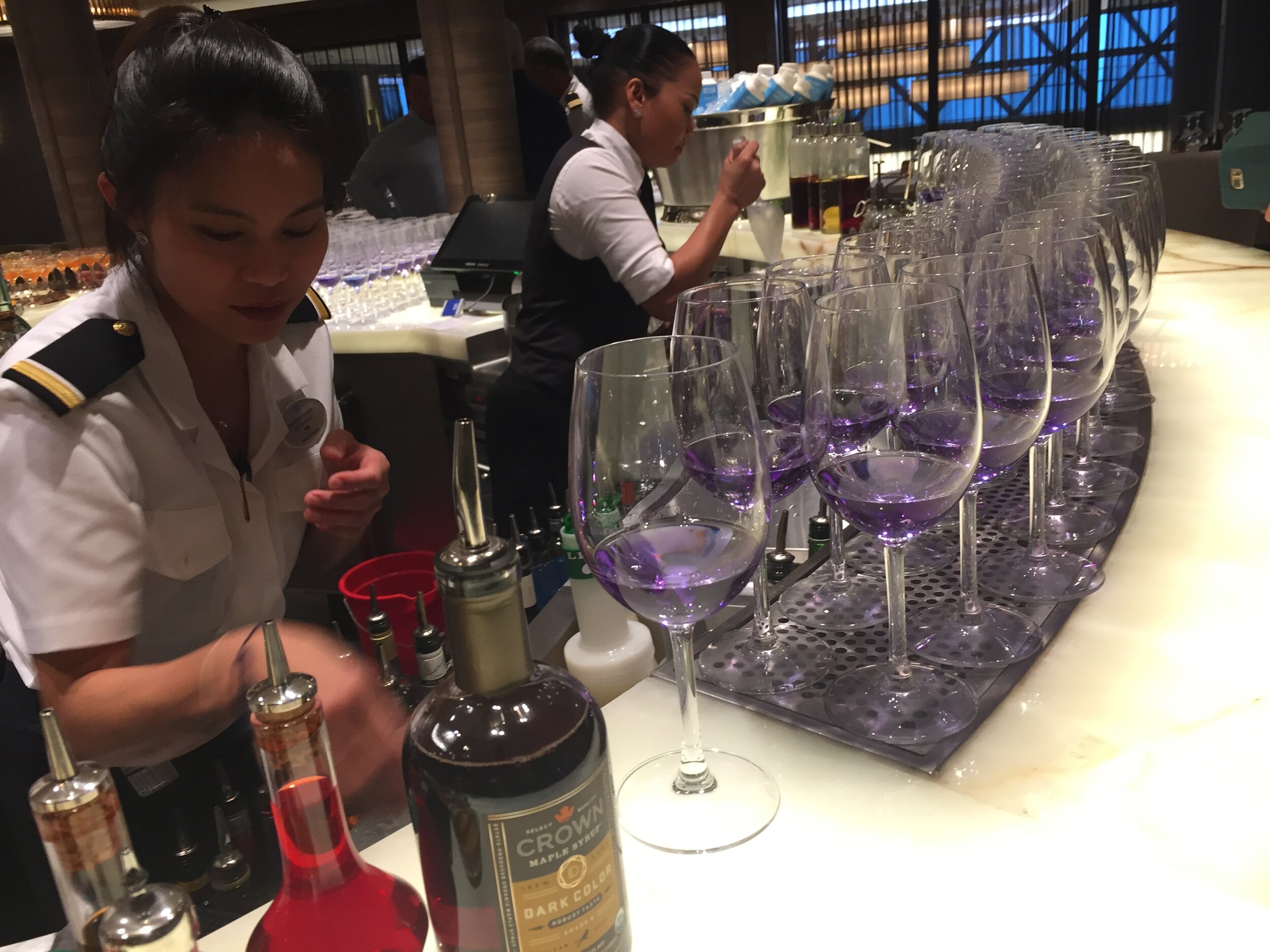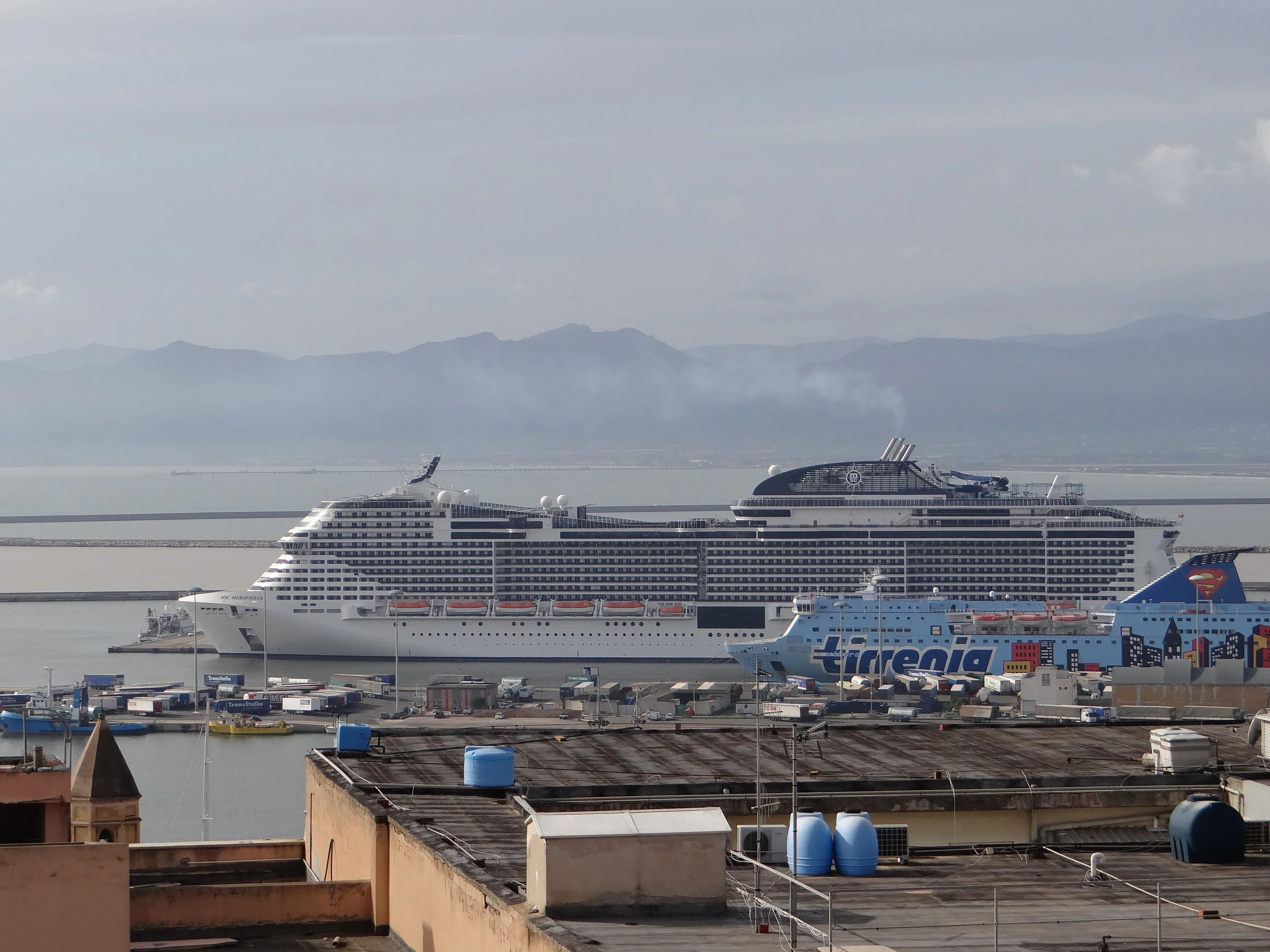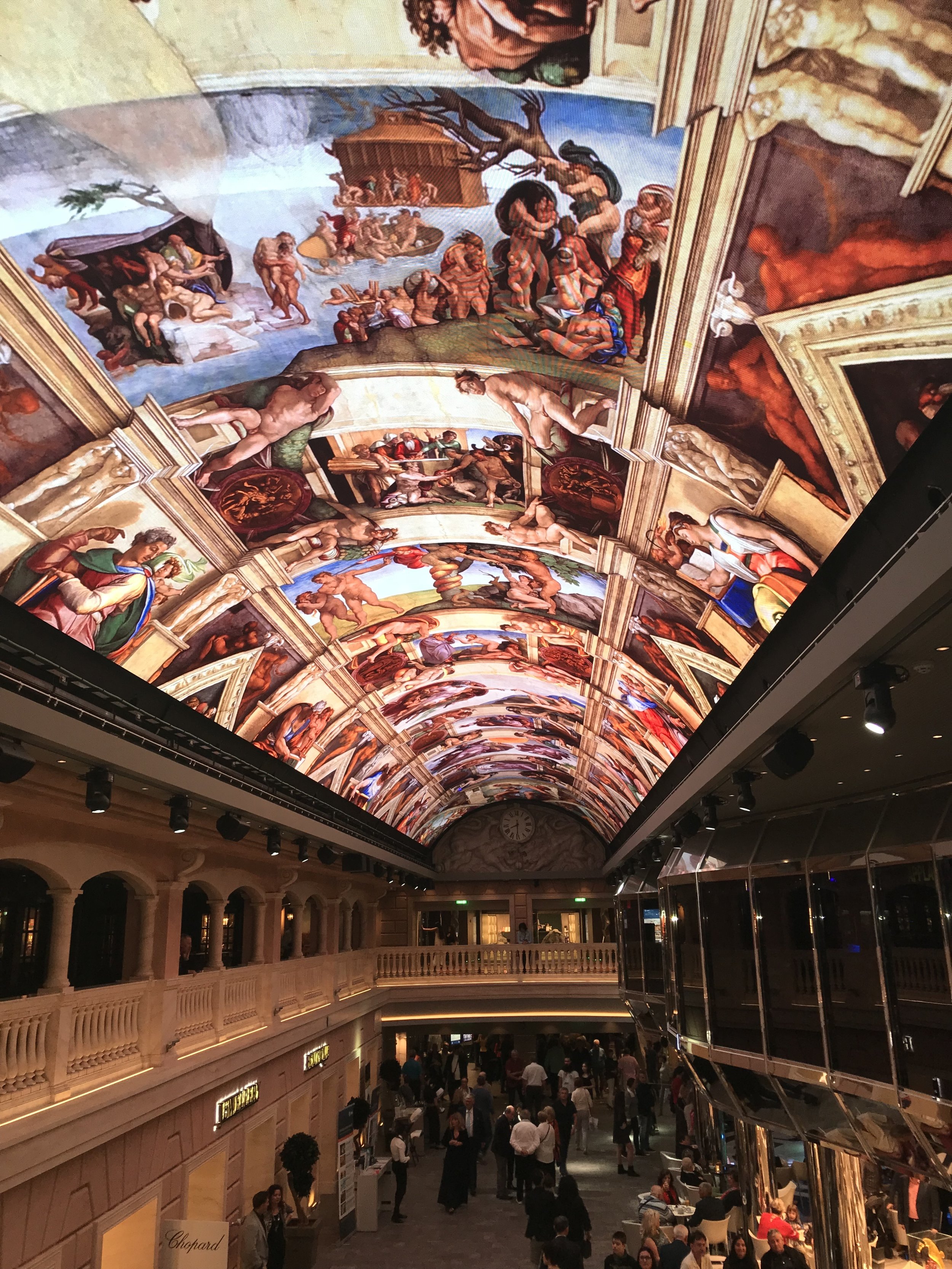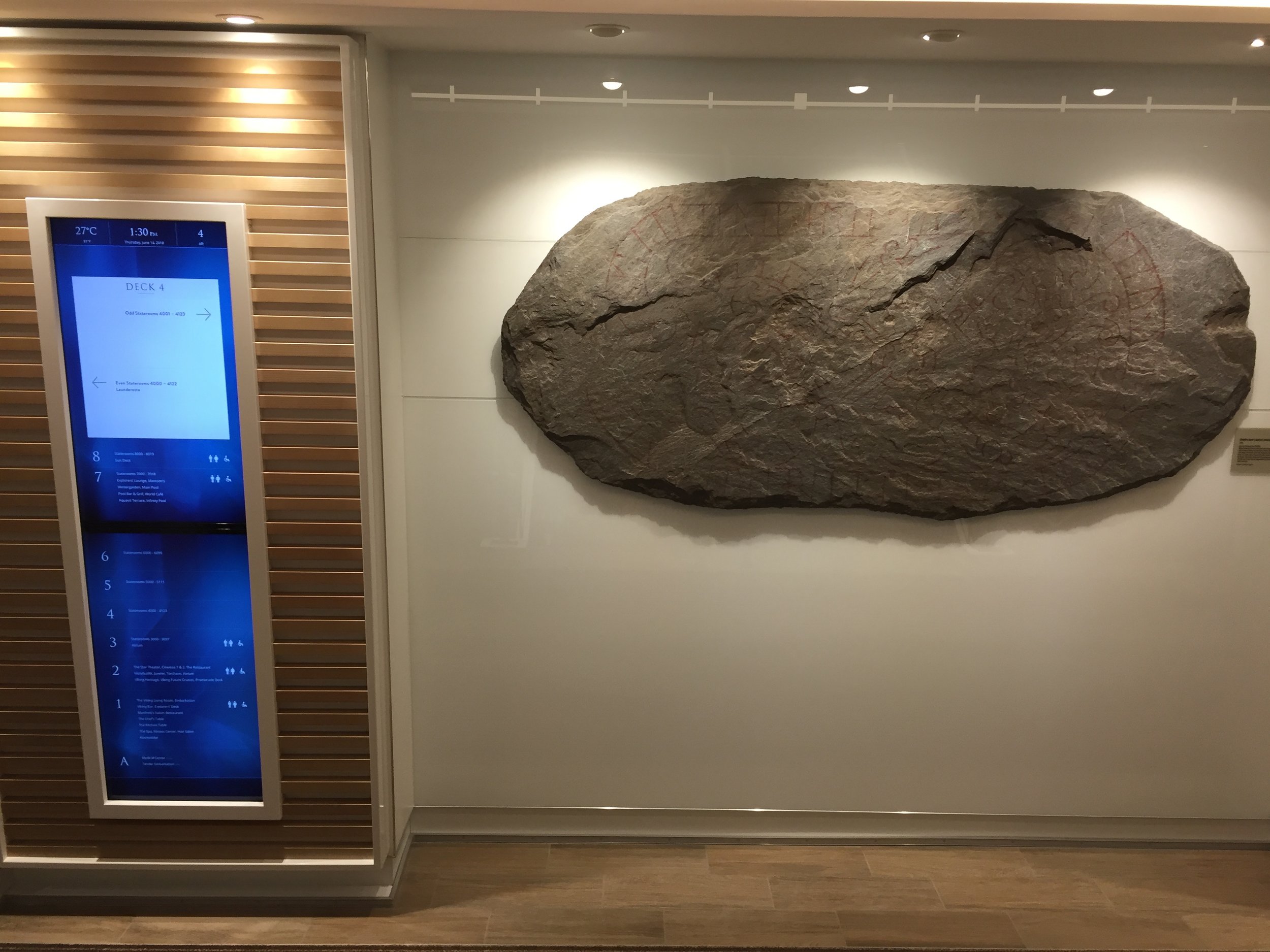An evening in Montecarlo: what to do and what to see
Montecarlo is one of those legendary names associated with luxury and glamour, and most of this image responds to reality.
However, when I first visited the Principality of Monaco I was surprised to discover that it does have also some genuinely interesting and beautiful spots which have little to do with luxury shopping, gambling or flashy sports cars.
The Old Town of Montecarlo (also known as “Monaco-Ville or simply “Le Rocher”, “the Rock”, in French) is actually a pretty picturesque spot and the fact that it is the capital of an independent country only adds to the appeal of the place.
On this occasion, we did get to Montecarlo the proper glamourous way, though, on the super fancy Windstar Cruises “Wind Surf”, a sail-powered cruise ship.
Since Wind Star anchored off Montecarlo on a nice and warm morning, we didn’t want to miss the chance to spend some time enjoying Monegasque territorial waters from the ship’s own water sports platform (as you can see in the picture!). This meant that we would have to compress our onshore visit to the Principality into just a few hours in the evening, but this was more than enough for a pleasant walk through most of the country’s highlights.
By the way, since some of the pictures I took on this particular trip turned out to be not great because of some issues with light and the selected frames, I have also used some pictures I took in my previous visit a few months earlier in order to illustrate this post.
Arriving to Montecarlo by sea
So, I guess this the proper way to arrive to Monaco is by sea, if you have the chance.
But, in fact, the Principality of Monaco is surprisingly easy by public transportation, because it has a very centrally located train station that is served by suburban trains running between Nice and Menton.
First of all, let’s explain the geographical setting.
As is broadly known, Monaco is really small, the second smallest country in the world, actually, after Vatican City, so it is basically a mile-long strip of land between the Mediterranean and the very steep mountains that line this part of the French Cote d’Azur. These are, however, ideal dimensions if you have a limited amount of time to tour a country :)!
And while most people may be familiar with the high rises that dominate the modern parts of the city and the famous Casino of Montecarlo, the part that I found most interesting by far is the hill where Old Monaco is located. We could even call it the “Palatine Hill”, in reference to the famous spot in Rome, because it is where the Prince’s palace (the “Palais Princier”) is located.
Monaco is quite hilly, and, actually the port and most of downtown lies on relatively lower ground (though not really flat) between the Old Town to the west and the hill where the Casino is located to the east.
Looking from the sea, though, the most prominent and magnificent building that comes into sight is the Oceanographic Museum, a palatial grand building several storeys high, which is nested between the sea and the Old Town’s “Rock”.
The cruise shuttle boat left us at the quay located right at the feet of the Old Town, so we decided to access the old town from the seaside. We walked around the rock until we got to the “Parking des Pecheurs” next to the Oceanographic Museum. There you will find a lift that takes you to the top (and the tip!) of rock.
By the way, didn’t apply to us, but I read that the “Parking des Pecheurs” is also one of the country’s gateways for people arriving by car from France, since foreign-registered cars are banned from entering Montecarlo’s downtown.
At the upper end of the lift is a garden that makes for a perfectly pleasant entry into the intra-muros part of Old Montecarlo (the old town is enclosed by an fortified enceinte some parts of which date back to the Middle Ages!).
This path offered us some views not just of most of the country of Monaco, but also of our beautiful Windstar Wind Surf ship at anchor (wherever we went to on this trip, whether Elba, Portofino or Sanary-sur-Mer, it was always awesome to catch sight of this beautiful ship from the distance!)
The Windstar Cruises “Wind Surf” as seen from the ramparts of Old Montecarlo
And Montecarlo’s downtown. The Casino is on the hill at the far end of the port.
Top things to do in Montecarlo: a walk through the old town
Surprisingly, Montecarlo has a rather nice old town. The vibe here is rather different than from the bling-bling, show-off luxury of the modern part of the town (particularly of the area around the Casino of Montecarlo).
Monaco-Ville is more reminiscent of the more earthy and subdued elegance of Portofino or even de old quarter of Nice (“Vieux Nice”). After all, despite the modern day national borders, all these places are all more or less part of the same cultural and geographical continuum.
If using the lift at the seaside cliff to access the old town, the natural itinerary is to walk through the narrow streets of the center in the direction of the Palais Princier. The palace is actually located next to the landside gate of the ramparts, so from there, and once you have done your sightseeing and taken a few pics, you can then keep walking downhill towards the downtown.
On the way you may pass see Monaco’s cathedral (yes, the country has its own fully-fledged cathedral, the Cathedral of Our Lady Immaculate!).
This is not the Palais Princier, but a building just opposite it
The Palais Princier, and the square in front of it, is the locus of attention (and center of power) of the Old Town.
While the palace itself (or at least its public facade) is nothing spectacular, the square where it is located makes for quite a pretty harmonious setting.
This is also a good spot to admire the colourful Monesgasque military regalia, since there are always some Carabiniers on guard duty at the palace gates.
The Palace square has also some nice views of “the other side” of Monaco, the part that lies to the west of the Rock and which is mostly the result of land reclamation projects undertaken during the reign of Prince Rainier in the mid to late 20th Century.
So, leaving the old town from the landside makes sense, because you then walk down the very steep fortified ramps. After all, a proper fairy-tale-like kingdom (principality in this case) couldn’t exist without its ramparts!
While walking down the ramps, you also get some pretty great views of the city.
At the foot of the rock, on the land side you get to the Place d’Armes, a lively area with bars and restaurants. Importantly, several bus lines stop here.
Montecarlo has a reasonably good public transportation system and bus Number 1 will take you all the way along the sea front to the Casino. A one way ride costs a couple of euros.
We took the bus because we were short of time and it was already getting dark, but if you have time and feel like it, you can also walk through the downtown to get a better idea of the place.
An evening at the Montecarlo casino
I am not a fan of casinos or gambling (I simply don’t get it!). Having said that, if in Montecarlo, a thing to do is is definitely show up at the casino.
The esplanade in front of the casino is a constant come-and-go of sports cars and other people showing off. Even if you are not into this type of thing, it is quite a curious thing to see.
In any case, it is perfectly possible to access the casino (it costs something like €20, prices may have changed a bit since) to peek inside.
You don’t even need to play, just need to follow some basic rules, like not taking photos inside the building (hence the only picture I post is of the entrance portico).
And this is how we ended our short foray into one of the world’s smallest countries! Our stay in Montecarlo had a hard deadline, since we had to sail back to our waiting ship.
Au revoir Montecarlo, it was fun!
Visiting Portofino and Cinque Terre in summer (beware of the crowds!)
Portofino and Cinque Terre are possibly among the most iconic tourist destinations in Europe. Most certainly they are two of the highlights of the Italian Riviera and, more specifically, its eastern half, the “Riviera di Levante”, which starts south of Genoa (btw, the Ligurian capital is quite an interesting an underrated city!) and stretches for about 100km or so towards the Tuscan coast.
This was not my first visit to Portofino and, interestingly, on both occasions I had arrived by sea. the first time was on the maiden voyage of the Viking Orion cruise ship, this time it was onboard Windstar Cruises sail-powered “Wind Surf”.
So, when our ship stopped for a day off Portofino, I decided it would be a good opportunity to go ashore once more and, this time, explore a bit further this part of Liguria.
The famous Cinque Terre came into mind, Italy’s smallest national park, containing five very picturesque villages: Monterosso al Mare, Vernazza, Corniglia, Manarola, and Riomaggiore.
Windstar Cruises offers an organized Cinque Terre tour for its customers, but we decided to do it on our own, instead, traveling from Portofino to Cinque Terre by train, bus and ferry. Quite an adventure as we shall soon see!
Here is Windstar’s Wind Surf, anchored majestically off Portofino
Our embarkation deadline, the time the last shuttle was sailing back to the cruise was at 18.00, so in principle that gave us something like ten hours to disembark in Portofino, do a bit of sightseeing, take either the bus or the water bus to nearby Rapallo, then take a train that runs all along the Ligurian coast, stopping at each of the Cinque Terre villages. It was quite a hectic plan, but perfectly feasible on paper.
However, as we shall soon see, no perfect travel plan resists its first contact with reality!
First step: arriving in Portofino
First a few lines for those not familiar with Portofino, which is undeniably a charming village.
If arriving from the sea, you pass along the ocre-coloured houses to enter into the tiny harbour. The jetty is at one end of the quayside promenade that leads to the village’s main square.
It is obviously a very touristic place, but one that has managed to preserve a certain vibe of upmarket elegance (something not true of some of the other villages we visited in this trip!)
The other thing to keep in mind is that Portofino is a really small place! There are basically a couple of commercial streets and the quays. There are also some interesting spots in the small peninsula it is located in, like the monastery of San Fruttoso, which is accessible mainly by the sea, but this we’ll need to leave for another occasion.
By the way, since most pictures of Portofino show the place from the seaside, here below is a picture with the sea-facing view.
Traveling from Portofino to Rapallo by public transportation
This was the first challenge. Portofino is at the far end of a tiny rocky peninsula, so in order to get the train towards Cinque Terre we had to go to Rapallo, which is a larger town some 5km further east as the crow flies.
There are a couple of ways to get from Portofino to Rapallo by public transportation: you can either take an urban bus or a water bus, which is a little bit faster and has better views, but it is more expensive. We decided to take the latter for the added experience and the views.
They depart about every hour or so in summer (a bit less frequently in other seasons) and cost around €12. In return, you get some pretty nice views of this stretch of the Riviera di Levante. The experience is pretty much like that of a ferry. It takes 30 minutes from Portofino to Rapallo, with an intermediate stop at Santa Margarita Ligure. It was not crowded at all. The boat has a small bar and toilets.
To be fair, this part of the coast, even if quite urbanized, it is beautiful and didn’t regret opting for the boat.
In fact, a place like Santa Margarita Ligure, which we just pass by on our journey between Portofino and Cinque Terre, in any other country would possibly be considered a top tourist attraction on its very own!
The ferry left us at the quay in Rapallo and the we had to cross the dowtown on foot.
Rapallo is a much larger town and not so pretty, altough, this being Italy, there were also some interesting sights here and there.
We also used the time waiting for our train to have something to eat at one of the local pizzerias near the station.
Rapallo is one the main rail trunk line that runs along Italy’s western coast, so it has quite a lot of trains throughout the day.
Traveling to Cinque Terre by train
Our initial plan was to visit as many of the ports as possible, although knowing this would be challenging, we selected just two of them that we would visit no matter what and at least one of them would be towards the far end.
The idea was then to retrace our path and do the intermediate points, depending on the amount of time we had left before our embarkation deadline (and considering we needed a bit of a time cushion to be safe).
First pit stop in Cinque Terre: Vernazza
Getting off the station and onto the narrow streets of Vernazza felt a bit like attempting to do shopping at peak hour in the days before Christmas (but with the summer heat!).
The place is totally packed and the main street just looked like a tourist trap, with tacky shops and restaurants lined one after the other.
It’s important to remember that all of the Cinque Terre villages are nested in a very narrow space between the sea and the adjacent hills, so all visitors are funnelled through literally one single street leading to the sea.
To be fair, the seaside view is nice, and I even managed to find a spot from where it was possible to take a picture without crowds. The village opens up a bit in the beach area, although as a bathing spot I found it far from ideal: little space available and also quite a few boats crowding in the water (not in frame). Nevertheless, if we had not been so pressed for time, I wouldn’t have minded a quick swim!
Cinque Terre in summer by rail? Crowds, crowds and train delays…
And here is when things started to get worse, because…surprise, surprise!…it turned out we were not the only ones who had the “great” idea to explore Cinque Terre by train at the peak of the summer!
Already 20 minutes before the train arrival Vernazza’s tiny train station, which is literally nested in the narrow space between two tunnels, was already packed as if it was Oxford Circus metro station at peak hour. To the point that we had to spread out all the way towards the edges of the platform, even the parts that stretch into the tunnel (far from pleasant). The train was, of course, also packed and we were warned there may be pickpockets operating.
Seeing this, we decided to continue all the way to Riomaggiore, which is the most southerly of the Cinque Terre villages, since we understood it to be one of the more accessible from the train station (and it also meant making it, symbolically to the far end of the Cinque Terre area). The idea of stopping at all five villages was starting to feel quite unrealistic, though.
Riomaggiore is indeed postcard-beautiful, but again the crowds and the overall tourist-trap feel of the place was very detrimental to the experience.
At least, I was able to have a bath here! Although, it was difficult to find a spot. Most of the flatter surfaces and easy access points into the water (there is no beach as such here) were already taken. I don’t mind the rocky landscape, actually I love bathing in coves and rocky coastlines, but here it was crowded everywhere!
So, at the end, the most suitable place was near the ramp you can see in the picture above. I was there just the time to freshen up a bit and head back to the station.
Actually that was a wise decision, because the Italian train operator (Ferrovie dello Stato) announced that some of the trains were running late and one of them had even been cancelled. We boarded a train north, but there was some confusion onboard about whether our train was going all the way to Rapallo or not.
So, at the end we stepped down at a town called Sestri Levante, which is some 20km south of Rapallo, and, there we waited for about one hour at the totally not glamourous local train station. Our train this time didn’t take us to Rapallo but all the way to Santa Margarita Ligure, which was convenient, since it is a bit closer to Portofino.
From there, we took a local urban bus to Portofino (fortunately we had time to make some enquiries and find out the tickets are sold at a nearby newsagents). The bus passes every 40 minutes or so and it takes around 20 minutes.
This bus ride was uneventful and along the way we could see a bit more of Santa Margherita Ligure, its beaches and seaside. We finally made it to Portofino with about 40 minutes to spare before our embarkation, not quite in the nick of time, but quite close, considering all the logistical hurdles!
Final thoughts on Portofino and Cinque Terre
So, as final conclusions: was this little and somehow stressful experience useful?
Portofino is nice and it really lives up to expectations, so it was a good decision to disembark. Santa Margarita Ligure was an interesting discovery and maybe a place to spend some more time on next time I visit the area.
Now, and sorry to say that, Cinque Terre was a disappointment!
I am aware that a big part of this was due to the combination of heat and an stressful train travel schedule, the actual places are beautiful, but, still, the towns are overcrowded and saturated and the local commercial offering looks banal and uninteresting.
I am open to go back at some other time of the year and change my mind, but would definitely not advise going there in the middle of the summer!
Sanary-sur-Mer, the Provencal town that invented scuba diving
When it comes to French Riviera, the cute seaside provençal town of Sanary-sur-Mer may not feature as high up in the popular imagination as Cannes, Antibes or Saint-Tropez. This makes it, actually, a perfect fit for this site and its overarching team of showcasing underreported and charming places. Because, if there is something that is not in short supply at Sanary-sur-Mer is charm.
The charms of Sanary-sur-Mer were, in fact, well recognized by quite a few literary and artistic figures in the pre-war years. Aldous Huxley wrote “Brave New World” while staying in Sanary, for example. The list of notable creative people that also visited or lived in Sanary-sur-Mer at some point in that era includes English writer D. H. Lawrence and French film-maker Jean Cocteau, as well as a whole ensemble of German and Austrian intellectuals, Bertold Brecht, Thomas Mann and Stegan Zweig among them, who moved to Sanary in the 1930s, fleeing totalitarianism in their home country.
The colourful and lively fishing port of Sanary-sur-Mer main claim to world fame, however, is the due to the work of another of its illustrious residents, Jacques Cousteau, for it was here that the French oceanographer and film-maker, together with partners Frédéric Dumas and Philippe Tailliez, developed and tested the first aqua-lung. The autonomous subaquatic breathing technology which made scuba diving possible was at least partly developed and first tested in Sanary-sur-Mer.
We’ll get back to this latter point shortly, because one of the highlights of the town is actually its scuba-diving museum, but, first, a bit of context about Sanary!
Arriving to Sanary-sur-Mer from the sea
Let me start by saying that my impressions of Sanary-sur-Mer are shaped by the fact that I arrived to the town by boat.
This, I think, makes quite a difference, because Sanary-sur-Mer is truly a sea-facing town and its most iconic sights are never too far from the water!
Sanary-sur-Mer was one of the last stops in our Windstar cruise between Civitavecchia (near Rome) and Barcelona and which took us to other beautiful and iconic, yet somehow underrated, places such as the island of Elba.
Windstar’s “Wind Surf” as seen from the Tower of Sanary-sur-Mer
The port of Sanary is actually too small for even a relatively small ship, like our beautiful sail-powered “Wind Surf” to get in, so the transfer to and from the shore is done through the small auxiliary boats onboard (which have a double function as emergency rafts), a much more stylish way to get ashore!
Top things to do and to see in Sanary-sur-Mer
And this is, essentially, the sight that welcomes you as you sail into Sanary-sur-Mer: a colourful array of traditional fishing boats moored along the quais. Picturesque? Sure! And that’s the reason we are here.
We had just a morning in port, so our activity consisted basically in exploring the area near the quais, which is where most of the interesting stuff appears to be located. In the picture below you can get an idea of what we are talking about.
The outdoor produce market is at the far end (more on this soon) and the scuba-diving museum is just at the back of the tower from where this picture was taken. In between is the main seaside promenade with most commercial activity taking place around it.
Our first pit stop was the aforementioned outdoor market, which was fully stocked with all sort of appetizing stuff, from seafood to fresh produce and, of course, French cheese and charcuterie.
To be fair, these types of market are common throughout the Mediterranean. This doesn’t make them any less interesting, though! And in Sanary it really, really adds to the generally colourful setting.
From the market to the next highlight, the 14th Century “Tour of Sanary” it takes just a short pleasant stroll along the quais, where most of the town’s activity seems to take place anyway.
The town appears to be very well kept and it is also dotted with quite a few interesting decor elements, like a couple of statues in classical style representing the maritime and agrarian activities that have shaped the economy of this part of Provence for centuries.
There are also a number of shops, restaurants and cafés along the quais and in the adjacent streets.
These offer the chance to buy some rather tasteful, stylish souvenirs (not the banal sort that has become commonplace in many major cities) as well as wine and produce from the adjacent hinterland (a note for wine experts here: Sanary-sur-Mer is in within the Bandol AOC (Appellation d'Origine Contrôlée) wine region.
The two museums to visit in Sanary-sur-Mer
And that’s how we get to what I think is the towns most singular structure: the 14th Century Tower of Sanary (“Tour de Sanary”).
The town, actually, pre-dates the village. It’s common to find watchtowers and fortifications all along the Mediterrnean, which in old times used to be swarming with pirates of all sorts.
So, in the 16th Century, a fishing village sprung here, under the protection of the tower. It was originally called “Sant Nazari” in the local Occitan language, a name that over time mutated to the French “Sanary” (with the more modern “-sur-Mer” added later to highlight its seaside location).
The tower offers two things.
The first is the great views of the town and the quais from its rooftop. Much recommended, even if you have to climb a really narrow staircase!
The other is the museum of marine archaeology (marine archaeology is starting to become a regular theme of this site!).
The museum is actually spread over the different floors of the tower and it showcases some of the items of historical significance which have been found in nearby waters. Bear in mind that Sanary is located roughly halfway between two major historical ports, Marseilles and Toulon, and the sea lanes around town have been heavily plied since Ancient times.
The marine archaeology museum is, actually, a perfect complement to the other museum in town: the scuba diving museum.
Visting the Frédéric Dumas Scuba-diving Museum in Sanary-Sur-Mer
I have mentioned earlier that Sanary-sur-Mer played an important role in the development of the scuba diving technology.
French oceanographer and film-maker Jacques Cousteau, who happened to have a house in Sanary, is the most well-known name associated with this invention, but Cousteau’s partners Frédéric Dumas and Philippe Tailliez were also instrumental in this achievement.
The three were apparently known as “the Mousquemers” a French language game of words that alludes to in a not-too-veiled reference to Les Trois Mousquetaires (“The Three Musketeers”) the famous literary work by another Dumas, Alexandre, in this case.
Sanary’s scuba-diving museum is actually named after Frédéric Dumas and it shows the evolution of diving and subaquatic activities since the early days of diving all the way to the invention of the modern aqua-lung in the 1940s.
The museum is quite small. It is privately run and consists of a single ground-floor room in one of the buildings adjacent to the port.
It does have some interesting historical artifacts, including some very ancient-looking examples of diving suits as well as the first early models of autonomous scuba-diving equipment.
Definitely go visit if you are in Sanary, even if you are not into scuba-diving.
Before closing this post, it is necessary to mention that the other major attraction at Sanary-sur-Mer is, in fact, not in town, but in the nearby coastline. Despite the area being quite urbanized, there are still quite a few nice beaches and coves around!
And, it is like this, with this last view of the town’s sea front from the Windstar “Wind Surf” portholes, that this post about beautiful Sanary-sur-Mer comes to and end.
But the series about our Windstar Cruises adventures will continue soon with more interesting places!
In the footsteps of Napoleon on the island of Elba
Arriving to Elba on the Windstar Wind Surf
There is a tiny island off the coast of Tuscany where Napoleon Bonaparte was king for less than a year.
This short period of time, however, was more than enough to leave its imprint and more than two centuries later, the name of Elba appears inextricably linked to that of the emperor of the French and there are, indeed, quite a few sites on the island connected to this historical figure.
But you would be wrong to assume that Napoleon is all that the island of Elba has to offer!
In fact, even without the Napoleonic stuff, Elba is an amazing destination on its own right just on account of its natural and historical heritage. We had the chance to visit recently in the month of July (perfect summer weather!) and, while we spent less than 12 hours on it, I can say that it was one of the highlight stops of our Windstar Cruises sailing around the Western Mediterranean.
So, let’s see what awaits the visitor in Portoferraio, the capital of Elba!
By the way, please, note that, while Elba is relatively small, this post covers only a tiny part of it, there are also a couple of other notable settlements, like Porto Azurro, numerous beaches and some mountainous areas (which get to a height of more than 1,000 meters). So, I would not rule out another visit in the future!
What to do and what to see in Portoferraio, Elba
Our visit started in the port of Portoferraio, where our ship, Windstar Wind Surf, arrived in the early hours of the morning.
If you asked some generative AI to draw some postcard-perfect picture of a picturesque Italian Mediterranean historical port city, it would possibly come up with something similar to Portoferraio!
And the first one to greet us literally off the ship’s gangway was…Napoleon himself! as well as Cosimo de Medici, because, while the Buonaparte gets most of the attention nowadays, the island of Elba is also linked to another of the great names of European history, the Medicis, which controlled the island for some time in the 16th C.
As far as the public space is concerned, though, Napoleon is all over the place, with this effigy and other associated symbology being ubiquitous in Portoferraio.
The cruise dock was just within walking distance of the historical center of Portoferraio, so just a quick and pleasant stroll away from the main sights.
Portoferraio is located at the tip of a rocky cape at one edge of a bay on the central-northern shore of the island. The port and the old town are surrounded by a line of small ridges that give it a semi-circular shape, not unlike some sort of theater auditorium which leans towards the sea.
Adding to the natural defense provided by the hills, on the land side Portoferraio is enclosed by the walls of Forte Falcone, the hilltop fortress that dominates the old town.
So, given our limited time onshore, we skipped the shops and cafés around Piazza Cavour, the most commercial area, located right next to the quays, and opted to walk uphill across the old town towards Palazzina dei Mulini, which was Napoleon’s residence during this stay on Elba (he used also another mansion on the mountain side of the island as a summer residence).
This was not just out of interest for Napoleonic history, but also quite practical, since the museum-residence is located on the far side of the old town and the way there offers a chance to walk right through the center of town and also get some nice views from its upper side.
It gets uphill very quickly in Portoferraio. The whole town is built on the slopes of a hill and, as soon as you get a couple of streets off the main commercial street it’s all small narrow streets, sometimes turning literally into stairs due to the steepness.
If you are looking for the “Mediterrannean vibe”, though, you will find plenty here!
So, a few hundred steps later we made it to Napoleon’s palace or, shall we say “villa” or “residence” since its proportions are not out of tune with the place.
To our surprise, though, we found out that it only opens at 2pm!
This proved to be a blessing in disguise, because we, then, decided to explore the nearby beach, called Spiaggia delle Viste (or “Beach of the sights”) and we were not disappointed!
The beach, a little cove with steep cliffs on both sides, is located just underneath Napoleon’s residence and it is accessed through a which you can access through a ramp just meters away from the museum entrance.
The beach was not crowded at all despite its proximity to the urban center, the cliffs and the exuberant vegetation gives it a protected feel. Also, the water was crystalline and a tad warm. Warning: it is a rocky beach, so it is full of pebbles, which I personally like, but I know it’s not everyone’s cup of tea!
By the way, what is this?! is the Royal Navy’s Mediterranean Squadron still keep an eye on the Buonaparte, lest he escapes and wreaks havoc in Europe again?!
Where to eat in Portoferraio, Elba
Ristorante Le Viste, https://www.ristoranteleviste.com
The only structure on the beach is the restaurant Le Viste, where we had lunch.
While not super cheap, Le Viste turned out to be a great place to have something to eat or to drink while enjoying the pristine waters of the Le Viste beach.
In our case, it was just right to get some shelter from the midday sun after bathing, change clothes and have some light meal and refreshments before heading for the museum in the early afternoon.
Visiting the Palazzina dei Mulini - Napoleon’s museum and villa on Elba
So, after our second attempt and about half an hour of queueing under the sun (yep, apparently we were not the only Napoleonic-histroy buffs in town that day!), we got into the Palazzina dei Mulini.
The residence itself is not too big (particularly if considering it housed not just the Emperor but part of his family and retinue).
It is a two-floor villa, and has been restored to how it may have looked like during the few months that Bonaparte lived here.
Note the neoclassical, Empire-style furniture throughout (although apparently Napoleon preferred to sleep in his own simple military campaign bed, even when indoors!)
I’d say the best of Palazzina dei Mulini are its gardens, which are quite something, though, pretty pleasant and with great views of the Mediterranean sea.
This place may have felt too small for a man that aspired to rule most of Europe, but in and by itself, Palazzina dei Mulini would make for an awesome summer residence!
The Napoleonic heritage on Elba
It may have been a short lived reign (although Bonaparte, in its usual hyperactive drive, implemented quite sweeping political and economic reforms on the island) but Elbans do certainly remember Napoleon.
It is simply not possible to walk around Portoferraio without stumbling upon references to Napoleon right and left. I have tried to collect here some of them.
There are other sites in Portoferraio that are very closely linked to Napoleon, such as the Theater of the Vigilanti, which is a former church that Bonaparte transformed into a small-scale opera house, or a cultural center (named after a local Napoleonic officer, De Laugier), which hosts exhibits about the Emperor. Since our ship’s departure time was 6pm, we didn’t have that much time left, though.
So, we just skipped those and opted for another walk around the historical center of Portoferraio on our way back to the ship. Here are some of the snaps we took along the way.
So, this short but intense trip to Elba ended where it started, in the docks, that once saw Napoleon and a small number of followers embarking for France and the period that has come to be known as the “100 Days” before he was again beaten at Waterloo…
But this is a story behind the scope of this post, which just aimed to pinpoint and showcase some of the very interesting sights on Elba and the activities you can do there, even in a short time.
I think Elba is a perfect example of underrated destination. While it is not short of historical and natural charms, it rarely gets mentioned among the places that deserve a visit in this part of Italy.
My theory is that the small stretch of water that separates it from the mainland makes it too much of an effort to get to for the many tourists that have, in any case, their hands full with plenty of other interesting places in the Tuscan mainland. Nevertheless, it is a destination that I recommend very much visiting. In this regard, cruises like Windstar’s are a perfect way to get there.
By the way, to see where this amazing Mediterranean journey took us next, check out our comprehensive review of the Windstar Cruises Wind Surf!
Around the Mediterranean in style on Windstar Cruises Wind Surf
Cruise ships come in all shapes and sizes, but only a few of them are able to provide something akin to the super-yacht experience.
We are not just talking about a matter of scale (although this matters quite a lot too!) but of an entire philosophy that permeates every element of the experience. This is in addition to the truly unique wow factor that comes from sailing on one of only a handful of sail-powered cruise ships out there.
This is why, the moment the opportunity came up to sail the Mediterranean onboard Windstar Cruises Wind Surf, we didn’t think it twice!
What follows is our account of an unforgettable journey sailing through the incredibly blue waters of the Western Mediterranean, from Civitavecchia, near Rome, to Palamós, in the heart of the Catalan Costa Brava (you will find the itinerary on Windstar Cruises website as “Yachtman’s Harbors of the Rivieras”.
Keep reading for a detailed review of how the Windstar Cruises experience is like!
The journey was courtesy of Windstar Cruises. Opinions are all our own.
The Ship
The ship which took us on this Mediterranean journey, “Wind Surf” is one of only two ships of its kind ever built (the other being “Club Med 2”, which operates for the eponymous French tour-operator).
These two sibling ships happen to be also the two largest active sailing ships in the world (by length) and have quite some story behind…
Both ships were ordered by Windstar Cruises from a French shipyard in the late 1980s, but ownership changes at Windstar at the time put the project at risk. This is when Club Med stepped in. The French company took over the two ships and, upon completion, put them in service with the names “Club Med 1” and “Club Med 2”.
In 1998, Windstar Cruises was finally able to acquire one of the two, “Club Med 1”, and add it to its fleet after giving it its current name: “Wind Surf”.
At 14,700 tons and 617 ft (188m) of length, Wind Surf is small by the standards of a cruise industry that has got used to launching ever larger ships, but this is the whole point.
Wind Surf’s most eye-catching feature, the one that captures the attention (and the imagination!) of people onshore wherever it turns up is, of course, its superstructure, with five 67.5-meter-high masts and the accompanying rigging.
To be clear, Wind Surf is a hybrid, which is is mostly propelled by diesel engines. Wind, however, plays a key role, not just when it comes to helping propel the ship, but also in confering it a rather unique personality.
When making full use of wind power, Wind Surf propulsion is assisted by 7 triangular sails. These are rolled out through a full automated mechanism every day as the ships gets underway.
Wind Surf can carry up to 342 passengers and a crew of around 210. A passenger to crew ratio which gives you an idea of the type of personalized service Windstar Cruises strives to provide.
The ship has a total of six decks. There are 150 staterooms on decks 2 and 3 and 18 ocean view suites on deck 5. Those looking for an even more exclusive experience have a choice of 2 deluxe ocean view bridge suites and…wait for it…an “Officer’s Suite” which is located within the officer's quarters!
Most of the ship’s common areas are on Deck 4.
Here you find the reception, which is on duty 24/7, the excursions counter, a shop, a library, some workspaces, and a large lounge area (where some of the live entertainment and the pre-excursion briefings take place) with its own indoors café, as well as one of the ships’ restaurants, “Amphora” (more on food and drink onboard shortly!)
Before we proceed further, a note here about the elegant but unpretentious, no-nonsense decor style found throughout the ship, which we quite liked. It definitely adds to the authenticity of the overall experience.
The dominant pastel and wood-like tones inside and white-washed outside, both with touches of deep blue, do also a great job in setting the maritime yacht-like atmosphere.
On a schooner-like ship like Wind Surf, a big part of the action happens outside, whether it’s at the poolside terrace and bar, eating outdoors at the Veranda restaurant or simply sunbathing or walking along the decks while contemplating the Mediterranean coastline.
In this regard, one of the ship’s focal points is astern: the poolside area.
Wind Surf has a small pool, which, while not large enough to swim in it, is ideal to relax as you float and let the motion of the ship swing you around. There are two other adjacent warm-water hydro-massage tubs which provide great views of the landscape around.
Sun beds and a bar, which will prepare pretty much whichever cocktail you fancy on the spot, complete this particularly popular section of the ship.
Those of you that like to enjoy the sea breeze will be happy to know that there are two other partly open decks, 5 & 6, that allow you to walk the whole length of the ship, a full 360 degrees.
Deck 5 is, astern, quite similar in structure to the pool deck and located right above it, but instead of the pools, it has a larger bar with some indoor space that becomes the ship’s focal point late in the evening, when it usually hosts live music shows.
Also on Deck 5, but indoors and amidship, you find the Spa (more of this later) and, closer to the ship’s bow, the bridge. In this regard, We were positively surprised by the friendliness of the captain and crew, who showed us around when we happened to walk by.
By the way, in case you were wondering this is what the bridge of Wind Surf looks like!
Keep going up and you get to Deck 6 (the top one). Here you can get really, really close to the rigging and it is the best spot from where to watch the unfurling of the sails. This takes place every evening to the sound of some really epic music by Greek composer Vangelis.
It is pretty amazing to watch how, thanks to the automated mechanism, it takes only a few minutes for all seven sails to be rolled out.
It is also on this deck, on the bow side, that you find Wind Surf’s other restaurants: Veranda/Candles (partly outdoors) and Stella (which is fully indoors).
This deck, particularly the platform right above the ship’s bow, is a great place to enjoy the actual sailing sensation.
The state rooms
As mentioned earlier, there are different types of cabins, the vast majority of them are state rooms and all of our comments refer to this type of accommodation.
Our state room was on Deck 3, but I think they are all pretty similar regardless of the deck you are in.
You can move up and down the different decks either through the stairs or by using the lift. We used the former option most of the time, since distances within the ship are always short and it can be much faster to just walk than wait for the lift.
So, without further ado, let’s get into the room to see how they look like…
State rooms are 188 sq ft (17.46 sq m) and are fitted with a queen size bed and an ensuite bathroom.
I was very positively impressed by a number of tiny details in the room.
Let’s start by the Queen Size bed, which, we can attest, is truly comfortable. It’s got good natural light, but also lamps and a couple of reading lights. There’s a flat screen TV with a DVD player as well (tbh, we didn’t use it at all, since we seldom watch TV, but some may find it useful to know that it’s there).
But, do you what’s the one thing that we really, really liked? The two round portholes!
Yes, I am aware that nowadays most cruise ships have balconies, and these are cool, but…portholes? That give you the feeling to be sleeping onboard a real ship! And, you know what? If you like balconies, I’ve got news for you…pretty much the whole three upper-most decks of Wind Surf are, in essence, a large interconnected balcony, with plenty of space to sit down, lay down or sunbathe.
More stuff: there is plenty of space for storage, there’s a whole cupboard and a large amount of drawers and shelves, so we never felt the space was tight.
There is also a desk, which comes in very handy to shift through the trip’s papers and is also stocked with some fresh fruit.
Then some of the usual amenities: a safe, a mini-bar, hair-dryer, etc. There are also robes available.
Another pleasant suprise is that there are also universal electricity plugs (since Windstar Cruises is an American company and most passengers are from the US, I had brought a US-EU adapter, but it turned out not to be necessary!).
The bathroom is about as big as it can be in this kind of setting, but pretty well fitted.
It’s got a spacious sink top. It must have a really efficient air circulation mechanism because things, like wet swimming suits, dry really fast, despite the confined space.
Also, the shower is really nice, powerful! (perfect to rinse the salt out and freshen up after a water sports session at the marina).
There is also a set of L’Occitane toiletries.
The restaurants
One aspect of the Wind Surf experience we particularly enjoyed was food and drink.
Let’s start by saying that all meals are included in any of the four restaurants onboard, which is great. Also, regardless of each of the restaurants offering a somehow different type of experience (some elements, like the wine list were common to all, though), the food was really great in all of them.
There are four (in fact, three, if you count Veranda and Candles as one) restaurants onboard Wind Surf:
Veranda, which is on the top deck, partly outdoors, and is the only place open for buffet breakfast and lunch
Candles, which is, basically, Veranda but turned into an à-la-carte, reservation-required restaurant in the evenings
Amphora, which is the largest of the ship’s restaurants and located on the main deck
Stella Bistro, on the top deck indoors, specializes in French cuisine and it is, possibly, the poshest of the lot.
One important thing to bear in mind, though, is that while Veranda and Amphora work on a first-come-first-served basis, Stella Bistro and Candles, require advance reservation and our advice is to book early in the trip because they fill in really fast!
And, btw, Windstar Cruises has a partnership with the James Beard Foundation, a non-profit organization based in the US which aims to elevate the culinary arts. Some of the dishes onboard have the James Beard Foundation stamp.
Shortly below we will proceed to offer a glimpse of each of them.
Next a word about the ships’ bars. There are three of them, two astern, on decks 4 (poolside) and 5, and one indoors at the ship’s Lounge.
It’s important to note that, while all meals and non-alcoholic drinks are included for all passengers, it is not the case for wine and other alcohol drinks (and this includes the meals you have at restaurants).
If you are on an all-inclusive package, you get all drinks, no matter which one, by-the-glass. Otherwise you need to purchase your drinks individually or buy one of the day packages.
Whether you drink or not, is your decision, now, if you do, it may be a good idea to make sure your package includes drinks, since Wind Surf is stocked with a good wine cellar (at this point, special mention gotes to head sommelier Eleonora, which provided great recommendations throughout the trip!) and their staff can really prepare nice cocktails!
So, as promised, let’s go have a look at each of the restaurants. During our trip we had a chance to try all of them at least once and here is a summary of our experience.
Please note that the menu may vary with time and route!
Veranda
This is the most casual of the lot. As the name implies, it is located (partly) outdoors, on the top deck, although it does have space indoors too.
This is the only place to have breakfast and lunch, mostly from a buffet with both cold and warm dishes, although you can order some things à-la-carte too.
The buffet offers pretty much the same basic choices daily, although with some variations. The à-la-carte offering varies a bit every day, particularly when it comes to items such as fish.
Some of the food is prepared outside, where there is an open grill.
We would say the main thing with Veranda is choosing the right table for the time of the day in order not to get too much direct sun, since not all tables have cover. If in the Mediterranean in the middle of the summer it can get really hot already quite early in the morning!
Below are some snapshots of our meals at Veranda, to give you an idea.
Candles
Location-wise, Candles is the same as Veranda, but in the evening it becomes an à-la-carte restaurant and advance reservation is required.
We particularly enjoyed the fish dishes here!
Amphora
This is the everyday restaurant for dinner when onboard. You don’t need an advance reservation, you just show up and wait to be seated (which, at least in our case, was always immediately, since the place is rather big!), which makes it often the “default” option for dinner.
However, don’t let this casual approach mislead you, Amphora is a proper sit-down restaurant offering a pretty good quality experience, both in terms of food, service and atmosphere.
If anything, it gets, perhaps, a bit less of natural light than the other venues, mostly due to the fact that is located one deck down.
We had dinner a few times at Amphora, so here is a collection of images of what we had.
Amphora Meal 1:
Tomato Tart
Seared U10 Scallops
Vitello Tonato
Pan-roasted sea bream
Amphora Meal 2:
Slow-braised octopus
Spanakopita
Duck leg confit
We particularly liked this Californian Cabernet Sauvignon (thanks for the recommendation to sommelier Eleonora!)
Amphora Meal 3:
Stella
This is possibly the most “upmarket” of all of Wind Surf’s restaurants.
French Parisian Bistro
It requires reservation and we advise it you do it early in the trip. We left it for our second day and it was actually quite hard to find a spot, although staff made a good effort to finally accommodate us!
It is located on the top deck, right next to Veranda/Candles, but inside and closer to the ship’s bow.
Really nice layout and a bit more airy and with more natural light than Amphora.
The food was also excellent. Which one we like the most? It’s hard to say and I’d say it comes down to the specific dishes. The wine list was the same for both restaurants and here I must add a special mention to the Wind Surf’s sommelier in chief, Eleonora, which was a nice and very insightful guide in our choice of wines throughout the whole week (she shuttles between the different restaurants).
Amenities
So what else can you expect onboard a Windstar cruise. In this section we have tried to summarize several other aspects of the experience.
The fact is that, even on such a relatively small ship, there is so much to do that ultimately you have to be selective. What we describe here is what we did and it is just a cross-section of what is available.
Onboard Wifi
Wind Surf is equipped with SpaceX Starlink satellite connectivity, which provides fast and reliable internet everywhere, also when on the high seas.
Take into account, though, that, just as with the drinks allowance, access to Starlink depends on the package you are on. In any case, it can be purchased separately.
The onboard Starlink pass gives access to one device at a time, although it can be switched between devices depending on what you need the connectivity for.
Bear in mind that, if you have an EU mobile phone with a data plan, you may get internet access while on port and close to shore (thanks to the EU’s roaming directive), but as soon as the ship sets sail, you will need to log into the ship’s satellite network to get reliable connectivity.
Whether you have Starlink access or not, all passengers have access to a number of websites (these includes the Windstar Cruises as well as many major airlines and other travel-related resources. It also gives access to a digital media kiosk which gives access to several major media outlets.
Spa & Fitness
Wind Surf has also its own onboard spa, which offers a broad selection of treatment. These must be booked in advance and are paid separately.
In my case, I opted to undergo a postural and walking assessment, conducted by one of the onboard spa specialists. This included a postural evaluation, an analysis of the feet position when walking and a 40-minute session to practice some exercises for postural health.
While technically booked at the spa, this was done at the onboard gym.
This gym is relatively small (the right size for the ship, since it was never crowded), but well equipped with fitness machines, weights and other equipment. It also has lots of natural light, since it is located on the top deck.
Shows, music and entertainment
Shows and other social functions take place pretty much daily during the trip, usually in the evenings.
Dont’t expect, however, the sort of large theater-like spectacles you find on large cruise ships. On Windstar everything is much more intimate.
This is the case of the live music performance that takes place every night at the Deck 4 bar, for example.
We also enjoyed a Pub Quiz evening, brilliantly conducted by PJ, a South African crew member that acts as the ship’s master of ceremonies.
Other occasions that provided an opportunity to meet personally the crew and other fellow passengers were an evening drink with the captain, a thematic evening dedicated to learning about Polynesia (a part of the world where Windstar Cruises has quite a lot of activity) and a star-gazing meeting at the bridge at night, with the guidance of Wind Surf’s captain and other officers.
There was also a show evening at the Lounge in which several members of the crew performed several dances from their countries of origin as well as some humoristic sketches, everything conducted again by the very talented PJ!
This account wouldn’t be complete without a mention to two other special, and rather tasty!, treats that we got to enjoy in the perfect weather of the Cote d’Azur:
One was the ice-cream evening by the pool - no further ado needed.
The second, and on a much, much larger scale, was the outdoor dinner-barbequeue that all passengers were invited to join while the ship was anchored of Cannes.
Massive amounts of super-fresh food was cooked and served on deck in a casual, festive atmosphere. The evening was also amenized by live music. Below is a collection of pictures from that evening to give you an idea of the scale of it all.
And if we are talking about the “soft” aspects of the experience, we would also like to highlight the level of attention and service from the ship’s crew, particularly from the crew member assigned to take care of our state room (thanks Raysid!), which kept leaving small nice details for us to find when coming back from shore! Here’s a small sample :)
Excursions
An integral part of every cruise experience are, of course, the shore excursions and Windstar is no exception!
In this regard, the relatively small size of Wind Surf becomes a big plus, because it allows it to call at the smaller ports no other cruises are able to enter or, simply, dock offshore and offer a combination of excursions and water sports (both are feasible if you time your shore visits well!).
At every stop, usually 4-5 shore excursions are offered, with different intensity and duration (from 2 to 8 hours). Unless you are on an all-inclusive package excursions are contracted separately, with prices ranging from some $60 for things like a walking tour of Cannes to something like $250-300 for longer outings, which in some cases included wine tastings and other activities.
It is recommended to book in advance because spots are limited and the most popular excursions fill up fast. Assembly is usually at around 8-8.30am.
Those going on shore excursions have access to quite a lot of prep info, starting with a briefing the day before at the ship’s lounge, which provides not just practical tips, but also some cultural and historical context about each destination. You also get a one pager delivered to your room (these resources can also be accessed digitally on the ship’s portal)
When Wind Surf anchors off-shore, such as at Portofino, Montecarlo, Cannes and Sanary-sur-Mer, the ship’s auxiliary launches are used to shuttle passengers to and from shore (there is always a small Windstar branded tent onshore by the embarkation/disembarkation point).
This, in my opinion, gives to this type of smaller cruises and extra allure!
We went to shore at all the ports or towns that Wind Surf stoped at, although we only took one organized excursion, during our Cannes stop to the nearby town of Antibes.
A group of some 20-30 of us left Cannes in a bus together with a local guide, who showed us around the old town of Antibes (which has Ancient Greek origins and is one of the oldest cities in Southern France).
Our program was roughly as follows:
8.15am Assembly and transfer by launch to the port of Cannes
9am Bus to Antibes (which is some 15 miles distant)
9.30 to 12.30 Guided tour of Old Antibes, a relatively small but charming little seaside town, complete with a castle and a lively fresh food market. The tour included also an a taste of absinthe at a local historical bar.
13.00 Back onboard
Our Itinerary: Civitavecchia (Rome) to Palamós
While the purpose of this post is to describe the experience onboard Wind Surf, the itinerary and choice of ports is, of course, is also an essential element of the journey.
Sailing in the Mediterranean is synonymous with landscape and history overload, so we provide here just an outline of each, and have decided to describe each of them in a series of separate posts.
Portoferraio, Elba
A beautiful little island, the largest of the Tuscan archipelago, and renowned for being the first place of exile of Napoleon Bonaparte. While it is certainly a must for Napoleonic-era buffs, there is a lot more than Bonaparte on Elba, including a picturesque steep old town and some amazing beaches.
Portofino (and Cinque Terre)
A postcard-perfect colourful seaside hamlet which encapsulates the essence of the “poshest” Italian Riviera. It is also a stepping stone to explore other beautiful spots along the Ligurian coast, even the somehow distant, but still pretty accessible by public transport, Cinque Terre.
Montecarlo
A European classic, the world’s second smallest country and a billionaire’s lair. Getting into Montecarlo from the sea is quite the experience!
Cannes (Antibes)
Cannes is famous because of its connection to the world of cinema and, while we gave the modern city a pass, it is also a hub to explore other locations along the Côte d’Azur (as we did visiting nearby Antibes).
Sanary-sur-Mer
This was quite a discovery! I must confess I hadn’t heard of this small, colourful seaside town before, but it fit the program perfectly. Just the right size for a mid-morning visit, stroll along the pleasant quais, climb the town’s old tower and do some shopping around.
Palamós
The largest port in the Catalan Costa Brava. While the town of Palamós is nothing to write home about (it was aesthetically destroyed by 1970s architecture). It is a hub to visit some beautiful spots in the area, such as the medieval villages of Pals and Peratallada or some of the nearby coves and beaches. We actually ended our cruise here, since we had planned to stay a few more days in the Costa Brava area and it made more sense logistically to skip the last night of the cruise.
Barcelona
Not much to add here! One of Europe’s great cities and one we are not neutral about, since we call it home!
Each of these places has a charm of its own, but we would say that what remains constant is the awe that the presence of Wind Surf generated among those watching it from afar!
Water sports at the Wind Surf marina
We have left for the last what is, in our opinion, one of the highlights of a Mediterranean cruise on Wind Surf: the marina.
When the ship is at anchor, weather permitting, the area astern of deck 2 becomes a water sports platform from 10am to 12pm and from 1pm to around 4-5pm.
Forget about material things. This is what true luxury is about!
Whether you are into active water sports, such as kayaking or paddle surf, or you just wish to chill out on an inflatable platform within sight of iconic landmarks like the Montecarlo skyline, the Wind Surf marina has you sorted! Just show up an enjoy. Towels and equipment are provided.
There are, of course, some limitations, such as, not venturing further than some 100m from the ship, but overall, it is pure bliss!
So, in summary, what’s our overall impression of Windstar’s Wind Surf cruise?
We’ve got some experience with cruises, including some high end ones on relatively small ships, and Windstar’s is certainly unlike any other cruise we’ve been on.
It is not about the, let’s say, “classic”, more material, idea of luxury, although on this account Windstar also scores high (particularly on the culinary front!), but about being able to do things that are accessible if on a small ship: water sports at some of the most exclusive spots on the Cote d’Azur, accessing small ports, star-gazing in the company of an experienced sea captain and so on…
Also, the uniqueness of Wind Surf. Granted, sails only provide part of the propulsion, but, still, it is nice to sail on such a majestic ship. There is something special about watching the coast fade in the distance from the wooden deck as the sail unfurl: the feeling of connection to the sea and to thousands of years of maritime history.
Cruise Report: on the Norwegian Encore maiden voyage
Exploring a state-of-the-art cruise ship during its inaugural sailing
Have you ever had the chance to drive a brand new car?
The smell of new that pervades everything is perhaps one of the most powerful, memorable sensory experiences.
This is not unlike sailing on a ship that is, literally, off the yard.
On November 2019, I was among those that were invited by Norwegian Cruise Line to experience the latest, state-of-the-art ship of this Miami-based cruise operator.
The Norwegian Encore’s maiden voyage, from Bremerhaven, on Germany’s North Sea coast, to Southampton, in England, would give us a chance to get a short, but intense taste of what this cruise ship has to offer in terms of facilities and service.
Continue reading for a short, but comprehensive tour of the ship and a glimpse of what the Norwegian Encore experience it is like…
How is it like to sail on the Norwegian Encore
The Norwegian Encore is a 169,000-ton “Breakaway Plus” class ship for capacity for 4,000 passengers and 2,000 crew, which makes it the 11th largest cruise ship in the world at the time of writing these lines.
As is often the case with these very large ships, you don’t really get the sensation of being in a crowded place, though. And there is so much to do onboard that people distribute themselves all over the place, it is rare to find some bottleneck.
Here’s a glimpse of the staterooms (with veranda).
Did I mentioned that wi-fi worked great everywhere on the ship?
The central pool deck area, a classic of any cruise ship worth its name!
Although November weather in the North Sea did not invite to take a dip into the water! Thus, no swimming this time, although it still made for a great party venue and viewing platform (one of the things when sailing on the English Channel is that you come across lots of maritime traffic, a treat for ship-spotters!)
In these pics you can get a view of the Norwegian Encore pool deck area and some of the adjacent amenities, such as those warm water jacuzzies on the side and the massive aquapark.
Plenty of entertainment indoors too and for a diversity of aesthetic tastes, as you can see here, from the 1950s American diner style to a more classical lounge area.
In case you are a Starbucks junkie, you would be glad to know that there is one onboard! (and Starbucks coffee machines are also available at the buffet area)
And of course, entertainment by the ship’s very own theatre company. Only time for one show, but was great!
Special mention goes to the games arcade. It was a first for me, nevertheless it was quite interesting to check out the whole range of immersive experiences using the latest 3D entertainment technology, from driving a formula one racing car to shooting zombies and slaying dragons.
Plenty of options to choose from!
The Haven
One of the most interesting aspects of the trip was becoming acquainted with The Haven, Norwegian’s premium product.
This is a secluded area, literally a private haven within the buzz of the large ship, which bring the levels of comfort, privacy and service one step up.
The Haven experience is designed to provide a peaceful and calm environment in a rather elegant setting. It has its own indoor swimming pool and indoor area, as you can see here (the set up reminded me that of classical Roman baths for that matter!)
And staterooms in The Haven are considerably larger and more luxurious
There is also its own a-la-carte restaurant, that we had the chance to try out, and a dedicated bar and lounge area. There is plenty of space to relax and socialize at The Haven, just in a more exclusive atmosphere.
The Food
But if you ask me, I’d say food is one of the highlights of a cruise on the Norwegian Encore.
There is, of course, a buffet area (where breakfast is served) on one of the upper-most decks and, if on MSC Meraviglia, the star of the buffet (in my opinion) was pizza, at Norwegian Encore I was positively impressed by the choices of Indian and Asian food available.
But there are plenty of other à-la carte restaurants onboard.
Although the journey was short, two nights and one day, we were able to sample the different eating options available: from Mexican and Italian to Chinese cuisine.
My favourite, though, was the “Q Texas Somkehouse”, a sample of which you can see below.
Oh! And, last but not least, we enjoyed as well as a cocktail and wine tasting, the latter with the ships’ sommelier. This was, of course, a special treat on a very special trip, but the same is available to passengers on regular cruises.
Cruise on MSC Meraviglia
Quality cruising at scale
In late 2018 I accepted an invitation from MSC Cruises to experience one of its most modern ships, MSC Meraviglia as it sailed around the Western Mediterranean.
What follows is an account of the different aspects of the ship that I enjoyed during the few days I was onboard. To be fair, the ship is so huge that I literally didn’t have time to try out many of the features available to its guests. Far from aiming to do a comprehensive review of MSC Meraviglia, I hope these lines can convey an idea of how is it like to sail on this amazing ship.
The Ship
MSC Meraviglia is a really large, modern ship.
It was launched in 2016 and had its maiden voyage the following year.
For some time, MSC Meraviglia was among the world’s five largest cruise ships, and, although some larger ships have since come into service, it remains among the top ten of the ranking. It is capable of carrying some 4,500 passengers and a crew of 1,500.
Happy to report, though, that those large numbers are perfectly compatible with a great passenger experience as you will see in the next passages!
The Itinerary
MSC Meraviglia at port in Cagliari, Sardinia
On this cruise MSC Meraviglia followed a clockwise route around the Western Mediterranean. Starting from Genoa, sailing down the Italian coast to Civitavecchia, near Rome, then on to Palermo, in Sicily, Cagliari (Sardinia), Palma (in the island of Majorca), Valencia, Marseilles and back to Genoa.
We boarded the ship in Palermo, so did not do a full circle, but spent 4 nights onboard, which allowed us to check out quite a few highlights, including the exclusive Cirque du Soleil show and several of the dining venues onboard.
The State Rooms
One question I get often is whether it feels crowded in cruise ships of that size. And to be honest, this is something that never ceases to amaze me, because the answer is a resounding No! How do ship designers manage to create this sort of hotel-like conditions? this is a question I don’t have an answer for. But from a traveler point of view staterooms onboard MSC Meraviglia are very comfortable and don’t feel tight when it comes to space.
I have been on premium, smaller cruise ships before and the stateroom at MSC Meraviglia stood well the comparison.
It was all very modern, as you would expect of such a new ship, and spotlessly clean. We had seaview veranda.
As it was going to be my birthday during the cruise, there was also a bottle of champagne and some chocolate and strawberries waiting for me, which was a very nice detail!
Facilities
Like in most modern cruise ships, the pool deck is one of the central spots on the ship. Even if it was early November, the weather was pretty warm when we left Palermo, so the open deck pools were quite busy!
As you would expect, there are also other smaller pools, a solarium and an indoor gym all around the pool area.
One of the things I liked about MSC Meraviglia (and I think it is a feature of most, if not all, MSC ships) is the way the space is structured around a central gallery that allows you to walk pretty much unimpeded from stern to bow, with most of the services easily accessible alongside. At the centre is a wide plaza that acts as a central hub, linking also several floors of the ship.
Although the glitter and bling that you find in some of these areas (including a rather generous use of Swarovski crystals) are not exactly my cup of tea, this layout has quite a few advantages, for example, it makes it very easy to orient yourself when walking around the ship and it gives you a sensation of space. Despite the large number of people onboard, you rarely feel a sensation of crowdedness.
I particularly liked the minimalist, simple, modern lines of the bar at this central plaza. Its sea-facing windows are also great if you find yourself in the need to do some work while sailing!
The central gallery is really the core of the ship. Most of the shops and specialty restaurants line it and this is where invariably you are going to find yourself again and again.
The vault, lit by thousands of LED lights, produces quite amazing displays. If the themes at normal times can already be quite elaborate, including the ship’s very own interpretation of Michelangelo’s Sixtine Chapel frescoes, it is something to be seen when one of the regular sound and light shows are performed.
The central gallery is also the setting for all sort of shows, from the purely audiovisual, such as this one about roaring dinosaurs, all the way to full theatrical performances that passengers are invited to join somehow.
Passengers looking for some pampering can visit the Aurea Spa (most treatments are charged aside, though).
A couple of other elements of the MSC experience that are worth mentioning here.
The MSC for Me app, that lets you check in and book a number of experiences and activities throughout your trip. Something quite handy in such an entertainment-packed ship as MSC Meraviglia (more on this soon!)
The ship is also fitted with the Yacht Club area. This is, in fact, a more exclusive area within the ship that provides are more secluded, upmarket experience for those passengers looking for a more premium experience, yet, still willing to enjoy the advantages of a larger ship, such as the Cirque du Soleil shows, etc.
Shows & Entertainment onboard
In fact, if there is an aspect of the cruise experience where MSC really stands out and it is possibly a differentiating factor, this is the shows and theatrical performances onboard.
MSC Meraviglia has actually two theaters, one where the ship’s excellent theater company performs.
The other one, at the bow of the ship, is a smaller theater specially designed to accommodate the performances of the Cirque du Soleil. The Montreal-based arts company has an exclusive partnership with MSC Cruises to develop shows that are specifically designed to be performed at sea.
Ship’s Company Show
Although the Cirque du Soleil gets most of the attention and it is, indeed, a remarkable feat to have such a top-notch artistic company onboard, I would like to share some words also about the ship’s own theater and music company.
There are several shows every day, we attended pretty much all of them, and always had a great time!
Cirque du Soleil
One of the highlights of the cruise for sure.
MSC Meraviglia was the first cruise ship to host a Cirque du Soleil performance at sea. As you might imagine, the very intricate, complex acrobatic moves of these artists have an extra degree of complexity when performed on a moving surface, such as the ship. Although you can hardly feel the movement in a ship such as MSC Meraviglia, there is still movement and when success depends on millmetric moves, this is no small issue.
The Cirque performs in a specially designed stage, that is located in the center of the room, with spectators seating in tables all around (you can eat and drink during the show).
There were two different shows on offer, which are called “Viaggio” and “Sonor” (we watched the latter) on MSC Meraviglia at the time of our cruise. But far from being a one-off thing, the partnership between the Cirque du Soleil and MSC means that new shows are going to be introduced on other ships of the fleet.
You can learn more about this through this article that I wrote when I visited the Cirque’s HQ and training centre in Montreal to learn more about how this cooperation with MSC Cruises is unfolding.
No need to say that these shows have all the spectacularity and excellence that are the hallmark of the Cirque!
Eating & Drinking onboard MSC Meraviglia
Quite a few options to eat onboard MSC Meraviglia.
The simplest and most casual one is the buffett. Here I would higlight the pizza, that was really good and varied (as expected in an Italian-owned ship!)
There are also a couple of large restaurants at the bow of the ship.
These are large and with high turnover, nevertheless I was quite impressed by the level of service and the food. Let me remark that these are not specialty restaurants that you need to book in advance, you just show up and you get seated almost immediately.
The service was impeccable and the food and drink great.
We also tried one of the specialty restaurants, the Kaito Teppanyaki, as you may have guessed, specializing in Japanese cuisine.
This was also an amazing experience (and not just because of my “surprise” birthday cake). Not only the food was great, but the chef turned out to be a proper artist, and was able to entertain us all while he was cooking.
Summing it up
MSC has managed to provide a great experience at scale, which is not an easy thing to do! MSC Meraviglia proves that large numbers are not opposed to quality.
A cruise on Viking Orion - Nordic chic on the high seas
How is it like to sail on the maiden voyage of a Scandinavian luxury cruise ship
The Viking Orion, anchored off Portofino, Italy
Viking Orion’s naming cruise
A brand-new, sate-of-the-art luxury cruise ship…Italy…a beautiful (and extravagant) naming ceremony…a bunch of NASA astronauts, the chance to meet one of the most interesting personalities in the cruise business…this is a post I had long wanted to write.
Yes, I know that Viking Orion’s maiden voyage is not exactly breaking news - it took place in 2018 and another ship, the Viking Jupiter, has been delivered since then - however, even today, after more than one year has passed, it is hard to forget that very first voyage on the Viking Orion cruise ship.
This is not just because of the amazing ship naming ceremony that took place at the port of Livorno, Italy, but also because this cruise gave an opportunity to try out, first-hand, Viking’s Nordic-inspired luxury cruise experience and I think it’s fair to say that pretty much all my observations about the ship and the services it offers are still perfectly valid today.
Viking’s ships, all identical and built by Italian shipbuilder Fincantieri, are a truly beautiful sight, with their pointy bow and elegant lines
The Ship
Viking Orion’s modern lines next to Livorno’s old port fortress
Viking Orion is the fifth of Viking’s seagoing cruise ships.
It was followed in 2019 by the “Viking Jupiter” and there are six more ships on order, plus options for an additional four. So, if all goes according to plan, Viking’s ocean-going fleet will number 16 by 2027.
This is quite a commitment by Viking Cruises, that only relatively recently (2015) entered the market for sea-going cruises. The Norwegian-owned, Swiss-headquartered, operator has traditionally been better known for the river cruises that are at the roots of the company. Viking Cruises started up in the 1990s, after founder Torstein Hagen purchased some second hand river boats in Russia to ply that country’s internal waterways. It has since become the largest operator in the world in this market segment.
Viking’s sea-going ships are all identical in their dimensions and design. Some of the features onboard, though, such as the Explorer’s Dome on Viking Orion (more on this later), may differ from ship to ship.
This Viking Orion maiden voyage was by invitation only and not open to the general public.
Passengers were a rather unusual mix, starting by Viking’s charismatic owner, Torstein Hagen, his daughter, Karine Hagen, who is also involved in the management of the firm, and most of the firm’s top brass. Guests, flown in for the occasion, included an impressive number of astronauts (retired and active) as well as other personalities connected to space exploration. They all joined in Viking Orion’s celebration of space exploration, a recurrent theme through this very special cruise (more on this later!)
The itinerary: Civitavecchia to Barcelona by way of Livorno, where the naming ceremony took place, Portofino (offshore stop), Genoa and Montecarlo.
Before that, the ship had earlier sailed from Fincantieri’s shipyard in Ancona (all of Viking’s ships have been built by the Italian shipbuilder) with only crew onboard.
Because of agenda constraints I had to get off the ship at Genoa (btw, see my chronicle about this fascinating Italian port city), but in the two days and nights I was onboard, and despite this not being your ordinary cruise, I could get a glimpse of how is it like to sail on a Viking cruise.
The 47,842-ton, 14-deck Viking Orion can carry up to 930 passengers, a rather suitable size for the sort of high end experience that it aims to provide. It has most of the facilities you can find on larger ships, such as the elegant spacious central hall (above), the spa and deck pools (below) yet, it is able to maintain a feeling of exclusivity throughout.
One of the distinctive features of the Viking Orion (and, although I have not seen it by myself, I guess is the case of all its other ships too) is its Scandinavian-style decor, that pervades every corner of the ship. It is a rather subtle, understated type of luxury that draws its inspiration from nature and is instrumental in creating the sort of harmonious, cozy interiors that you find in most areas of the ship.
Some of the common areas, such as this reading room (below) wouldn’t be out of place in a Norwegian mountain lodge, it is only when you turn your head and see the blue expanse of the sea through the large panoramic windows, that you come round to the fact that you are actually onboard a ship!
Viking Orion features 2 specialty restaurants (Chef’s table ad Manfredi’s), plus the every-day “originally” named “The Restaurant", a pool side grill buffet.
The several bars and cafés that dot the ship are also an option for a light meal and, of these, I would highlight “Mamsen’s”, right next to the Explorer’s Lounge, on one of the ship’s upper decks. It offers great views in a relaxed, cozy environment. Its offerings, based on Norwegian specialities and inspired by the culinary tastes of Mr. Hagen’s mother, make it quite unique to the Viking experience.
As this was a special cruise, with quite a few celebratory events where a rather generous amount of food and drink was served, the eating regime was far from normal. I don’t think a culinary critique would be very representative of the regular Viking experience.
If what we tasted on the aforementioned occasions, the skills of Viking Orion’s chefs and kitchen staff are on a par with the rest of the experience.
As they say, an image may be worth a thousand words…
The Cabin
All cabins onboard Viking Orion are verandas with sea views.
There are three types of cabins available for booking, by order of luxury (from less to more): Veranda Stateroom, Veranda Deluxe Stateroom and Penthouse Veranda Stateroom.
During the two days I was onboard I was lodged in a Veranda Stateroom and the whole experience was very positive and not just because I was the very first one ever to sleep on that cabin (so it was as new and shiny as it gets!).
The space is more than enough, particularly if you consider that you are likely to spend most of the day outside enjoying either the excursions or the ship’s multiple attractions.
A nice detail that I particularly appreciated is that the room is equipped with a pair of binoculars (it was great entertainment to spend some time in the balcony doing a bit of ship-spotting and tracing the contour of the Italian coastline from the distance!) as well as a universal adaptor to recharge electrical devices.
Thumbs up also to the bathroom: contemporary design following the same type of minimalist, elegant lines that are a signature of the house…and guess what? the floor is heated!
The amenity kit, that features personal care products from several Nordic brands, is also very nice.
Scandinavian warmth
If you have made it this far down the text, you have possibly noticed, by now, a common theme: Scandinavian-ness.
And for those of us that are big fans of that region, this is great news!
True to Viking Cruises’ name and roots, Scandinavia’s celebrated approach to design is a constant, wherever you are in the ship: the simple, elegant lines, the palette of soft colours, the air of understated sophistication…
It is not just that subtle equilibrium between minimalism and warmth that only the Nordics seem capable of achieving, Viking Cruises goes one step further in claiming its Norwegian (and Nordic) heritage and succeeds in turning it into a major corporate identity symbol.
For a starter, there is a whole section of the ship dedicated to Norwegian culture and history, this includes some interesting exhibits, such as these traditional dresses (below) that we would have a chance to see again during the naming ceremony!
There is also a prominent place for Nordic art, in its different expressions, all throughout the ship.
Runestones, an ancient form of Norse art that consists in decorating stones with memorial purposes. They are found all over Scandinavia and in some of the territories that were once upon a time visited by the Vikings. The Viking Orion partakes of this tradition too and runestones hang from the ships’ walls (I guess they are copies, not the real thing, though!)
These stone runes offer quite a contrast with the high tech that is prevalent throughout the ship
Runes are an ancient form of Norse art
Another piece of decor with Nordic undertones: a reproduction of the famous Bayeux tapestry (that narrates the Norman conquest of England in the 11th century) adorns several levels of the ships’ main staircase.
Space Connection
If Nordic identity is a company-wide feature, space exploration is Viking Orion’s theme.
Viking Cruises been able to use the ship’s name and its astronomical resonances as an excuse to engage in an amazing exercise of story-telling.
Space exploration has inspired what is perhaps, the ship’s most unique signature feature: the Explorer’s Dome and Space exhibit, a planetarium and space-themed 3D cinema that lets passengers explore the universe and deepen their astronomical knowledge.
Not for nothing the ship’s godmother is retired NASA astronaut Anna Fisher, who has the honour of having been the first mother to travel to space. Several other astronauts were also onboard (possibly, the largest gathering ever of astronauts in any one place outside NASA) as were several prominent astro-physicists and senior figures connected to NASA and space exploration.
The ship’s naming ceremony in Livorno, was another opportunity to link the ancient Viking’s legendary exploration skills (they were the first European to get to America after all!) with that of Italian astronomer Galileo Galilei, who lived in the nearby (but inland!) city of Pisa.
The Experience
As a passenger you receive everyday a detailed booklet with detailed information about the next port of call and the activities available to you. So far so good, but here is where things start to get interesting…
When it comes to experiencing a destination, Viking deploys a rather immersive approach.
Passengers are able to attend a full programme of talks and lectures covering specific historical and cultural aspects of the places they are going to visit during the cruise. In fact, there is an historian-in-residence on every ship (Viking Orion being no exception) tasked with designing and delivering these prep talks. At the company level there is also a chief historian (would this be a CHO?) tasked with developing and coordinating all these learning programmes for Viking ships around the world, which gives you an idea of how seriously Viking takes this specific part of the cruise experience.
But this is not all…in the case of Viking Orion, an astronomer-in-residence is also at hand with pretty much the same functions!
During my Viking Orion cruise I attended an interesting lecture on Norse history given by an expert in the subject
These launches have a dual purpose, as safety boats and, in normal conditions, to reach some of the smaller ports along the way. Here at Portofino, on the Ligurian coast. We dropped anchor off this picturesque little town and then a shuttle system was organized the whole morning using the ship’s launches.
For those that are into food, Viking offers also a rather immersive experience.
At selected destinations you can join the ship’s chef on an expedition to the local markets to source fresh ingredients. When back at the ship these will be the raw material for a hands-on cooking session where passengers learn about different culinary traditions.
The resulting meal is then enjoyed, together with the rest of the group, at the intimate eating venue next to the kitchen (below).
The Party
Although this is not really part of the regular “Viking experience” (or of that of any other cruise operator for that matter), I thought it was necessary to include some words about the impressive naming ceremony of the Viking Orion in Livorno.
The images below can give you a feel of how it was like.
The show, that had British explorer Ranulph Fiennes as master of ceremonies, started with a magnificent music and light show projected on the tower and walls of Livorno’s fortress. Guests could as well enjoy the voice of renowned Norwegian opera singer Sissel Kyrkjebø, that performed live at the event.
The surprise came in the form of a jetpack-flying man that delivered the ax with which retired astronaut Anna Fisher cut the inaugural ribbon.
She was next to give Torstein and Karine Hagen some really cool-looking NASA jackets just before the event closed with a massive firework display.
